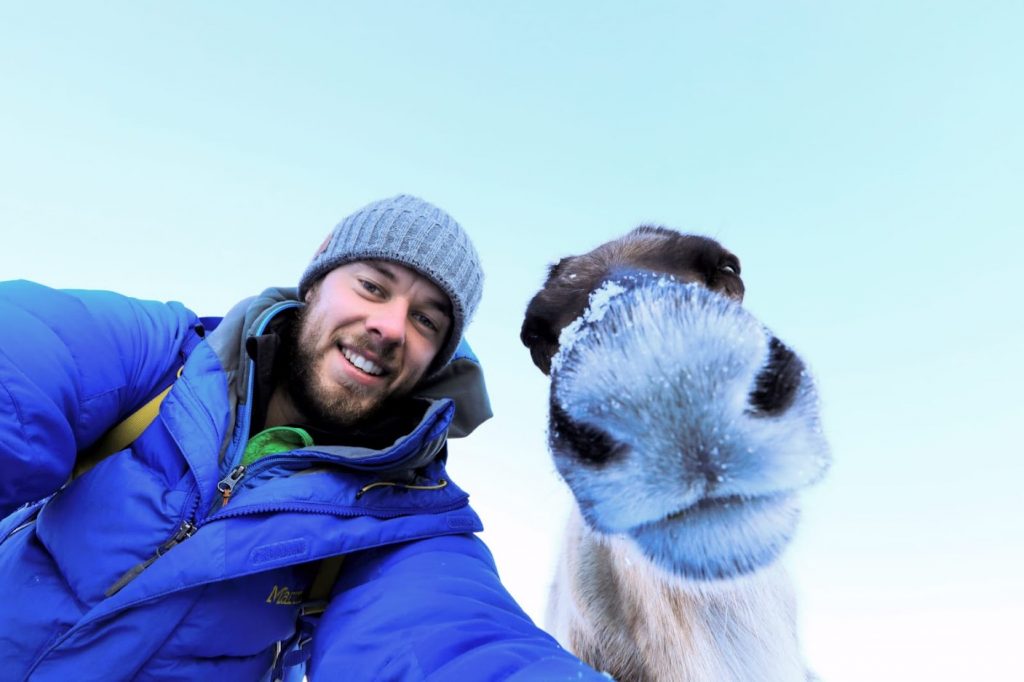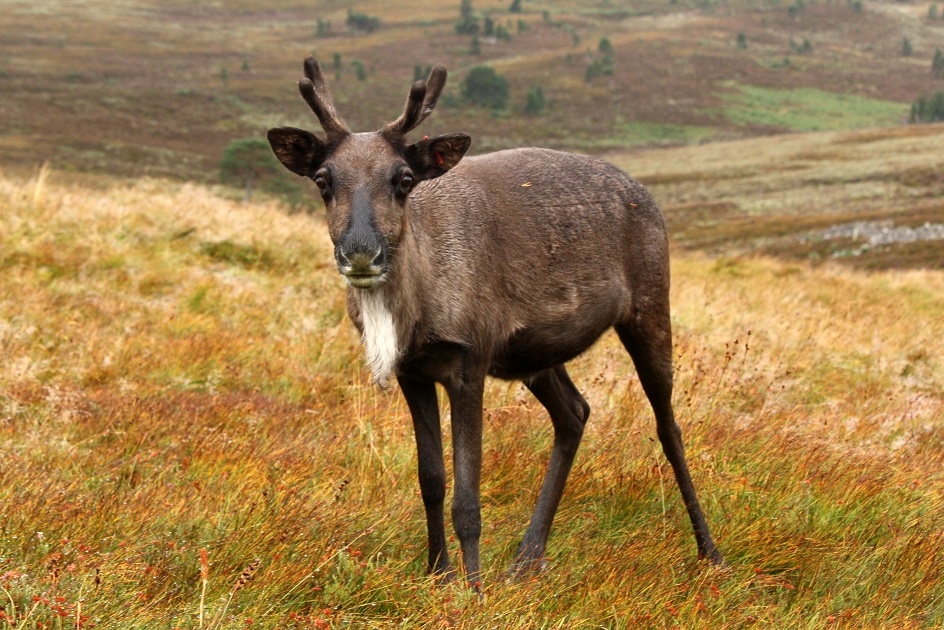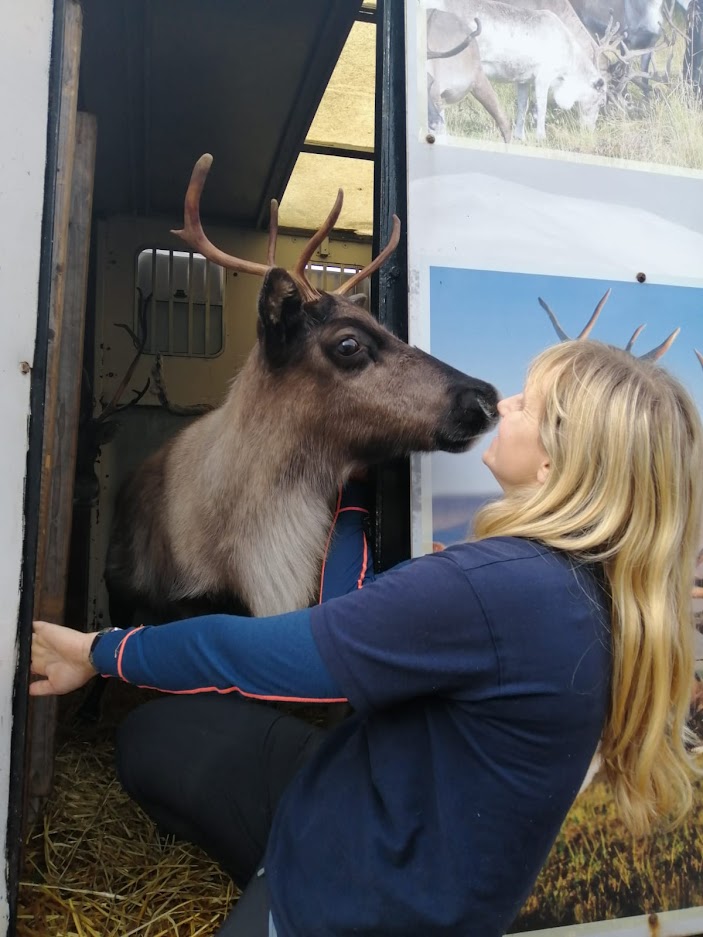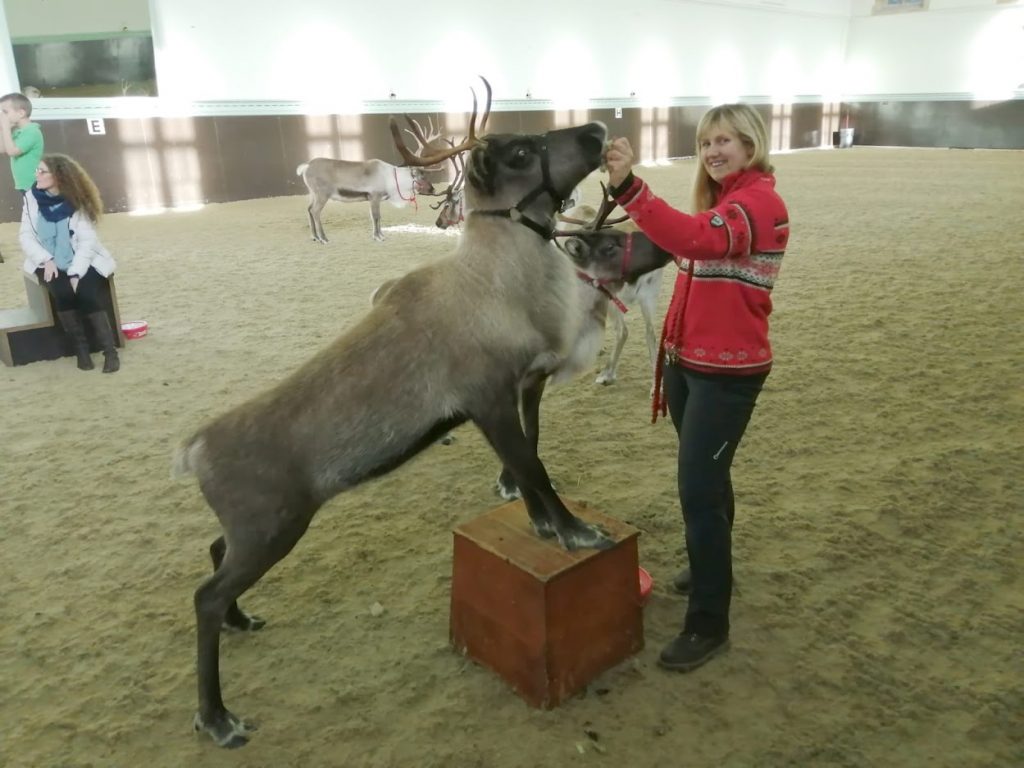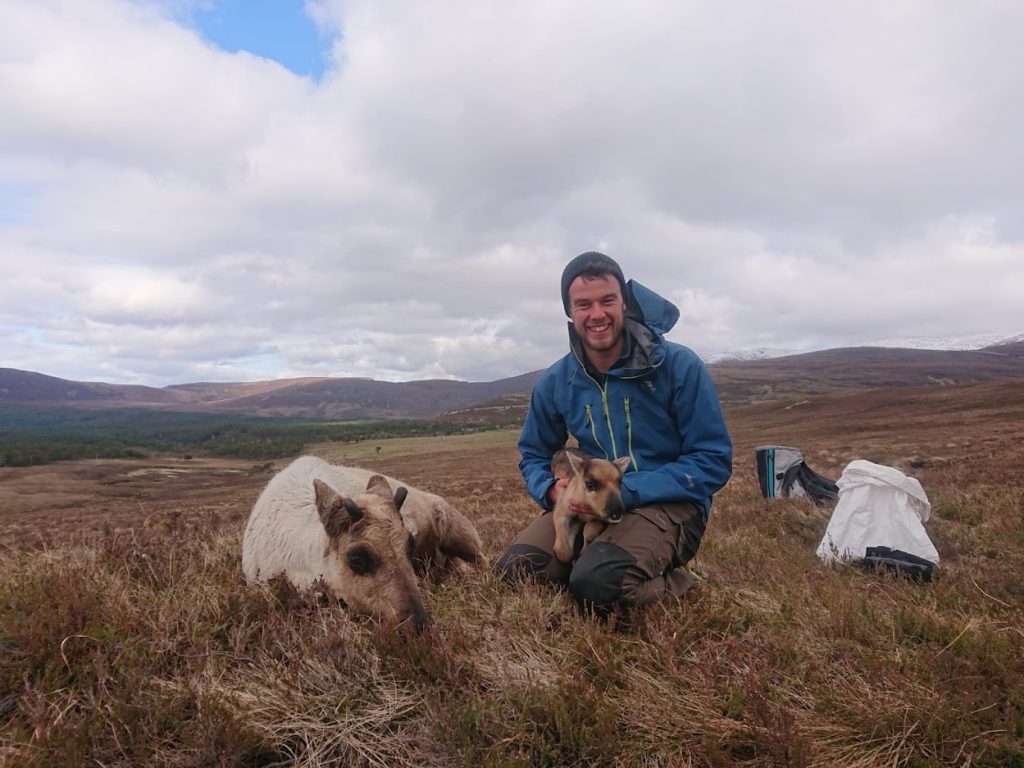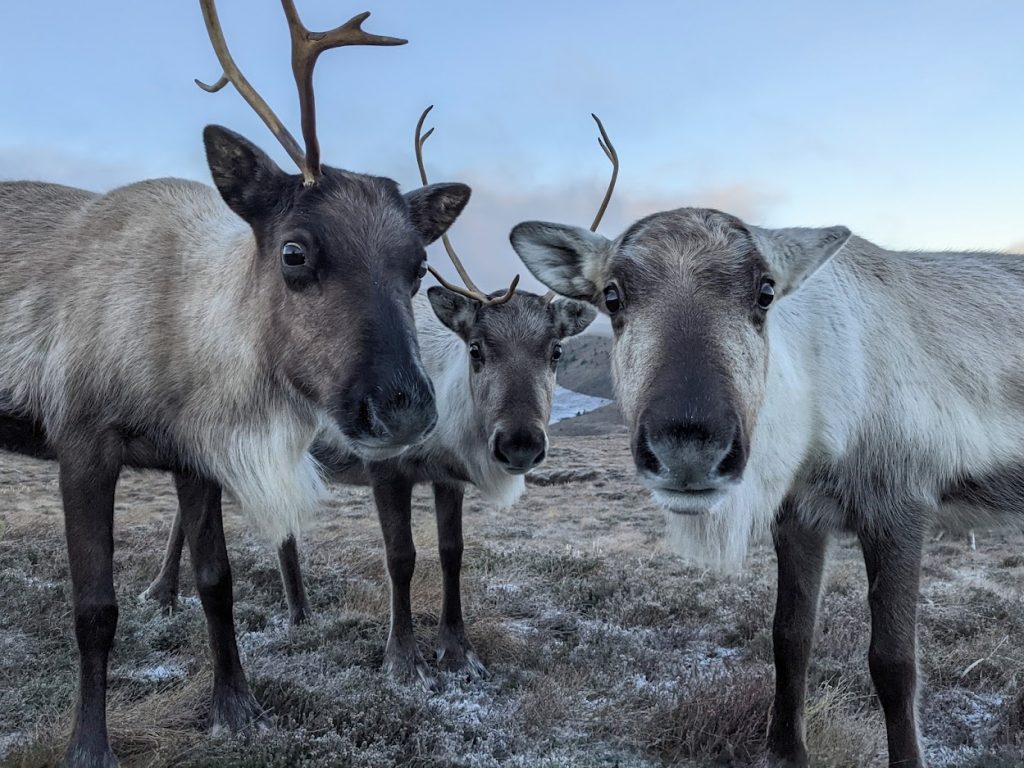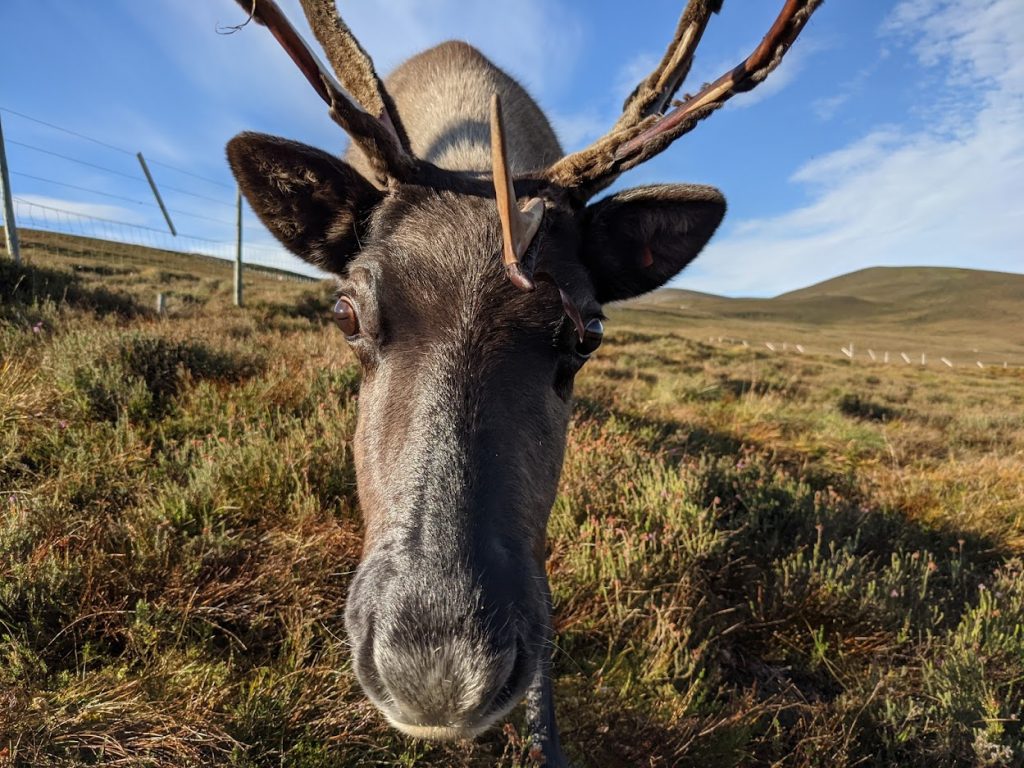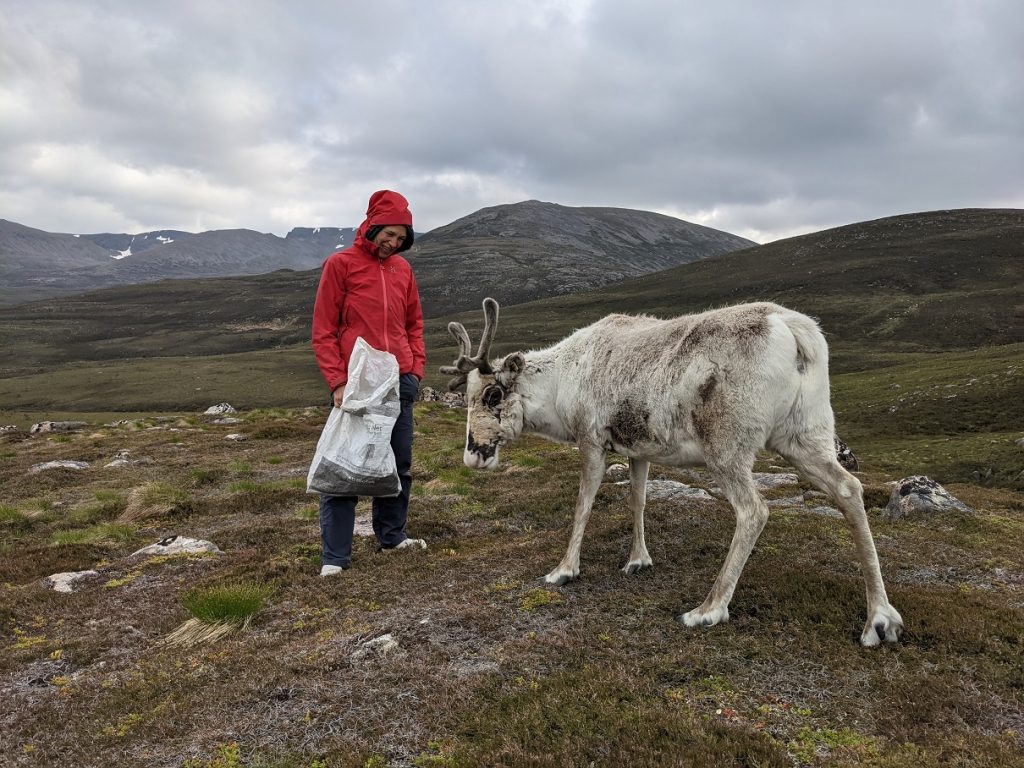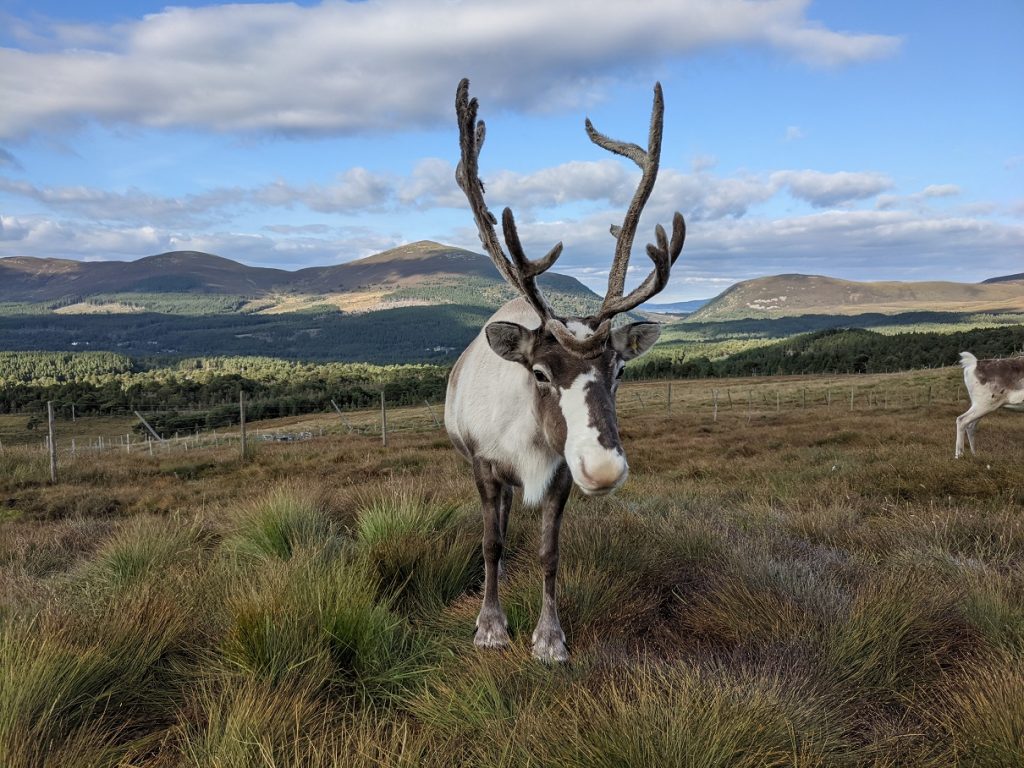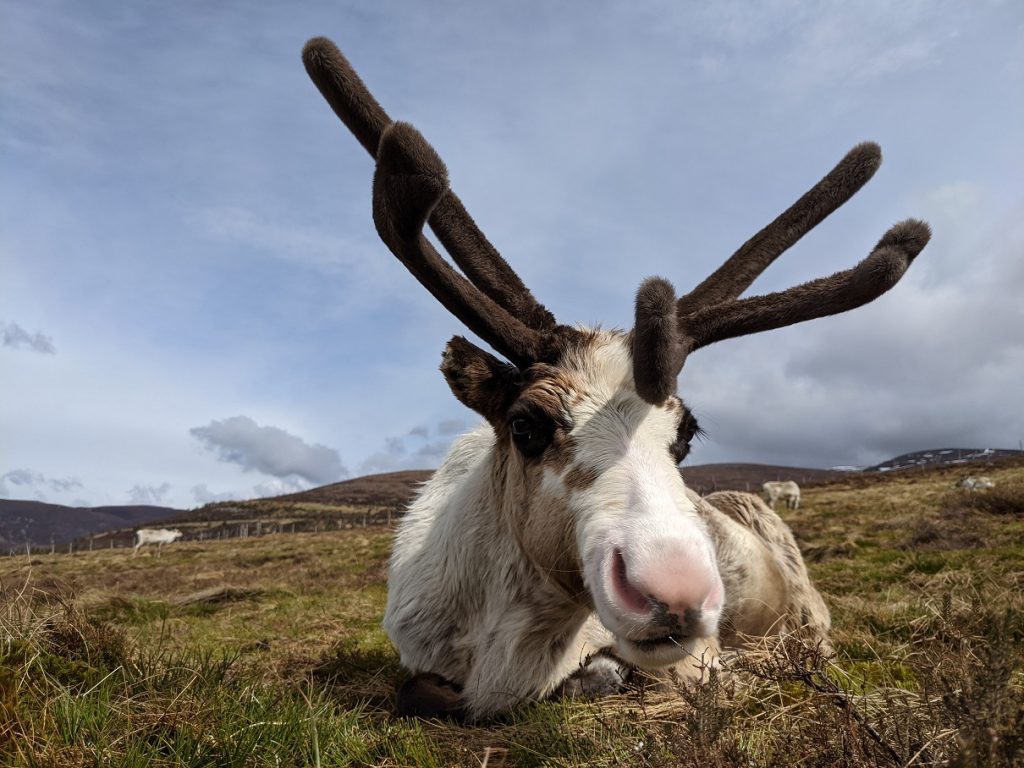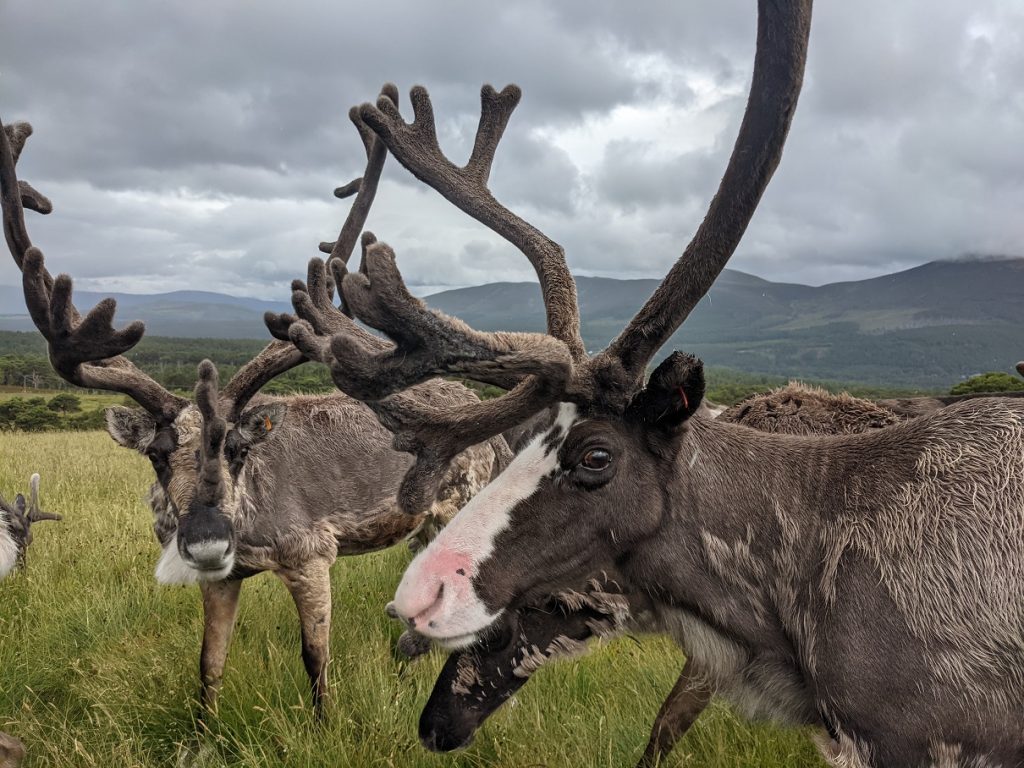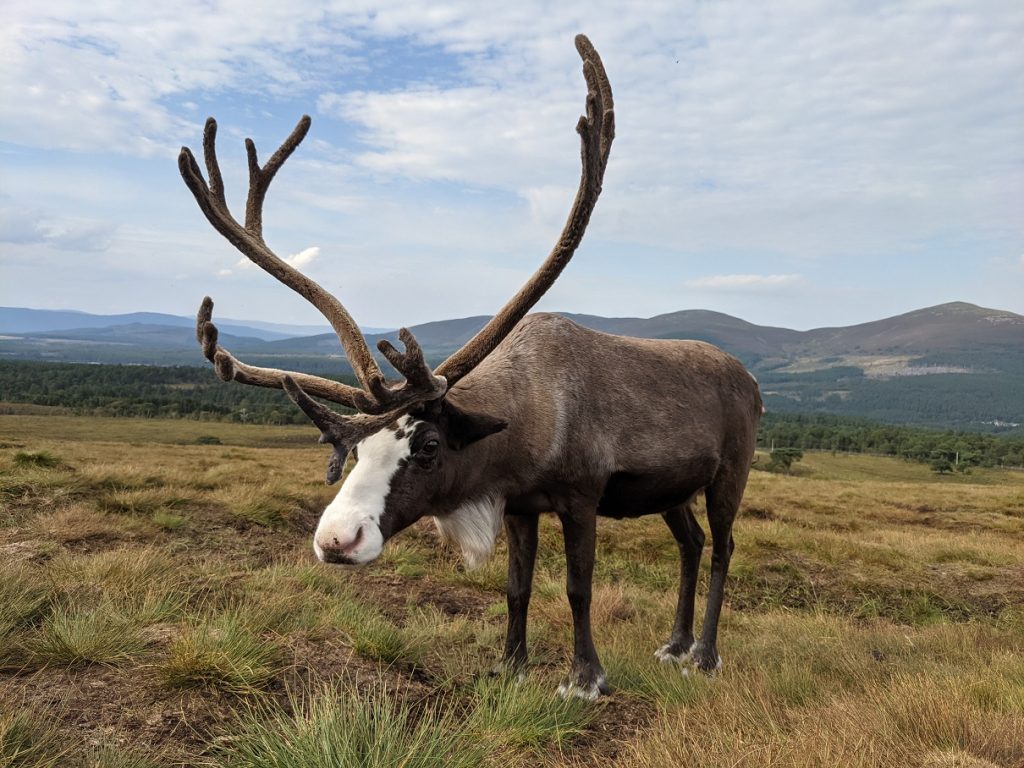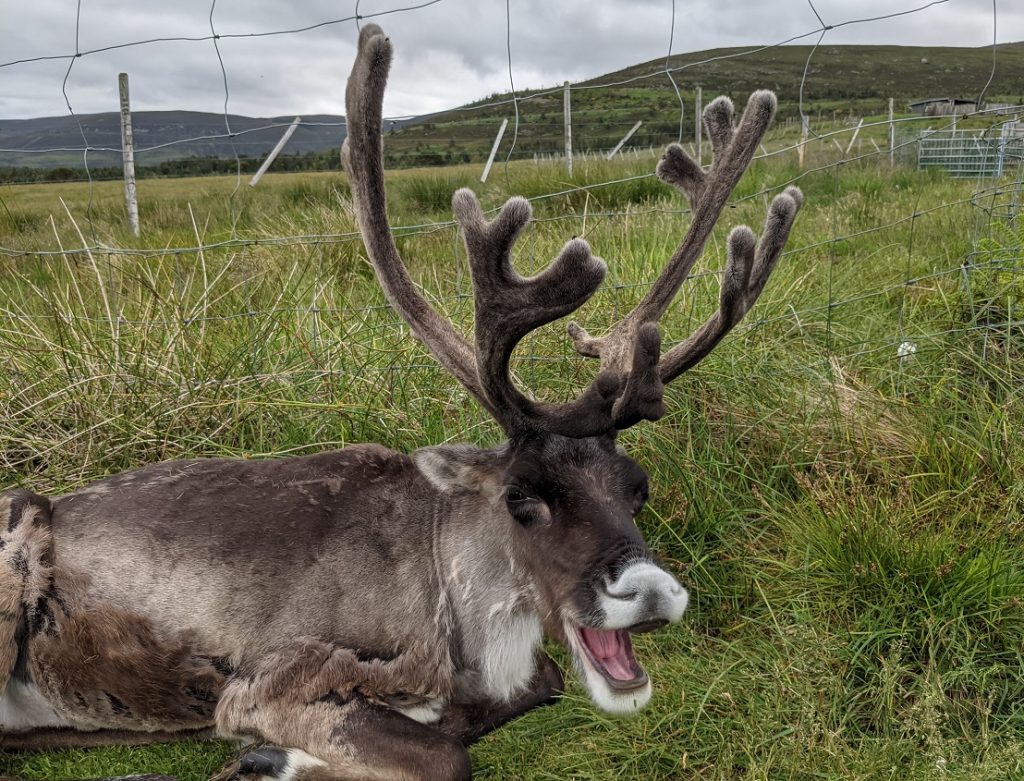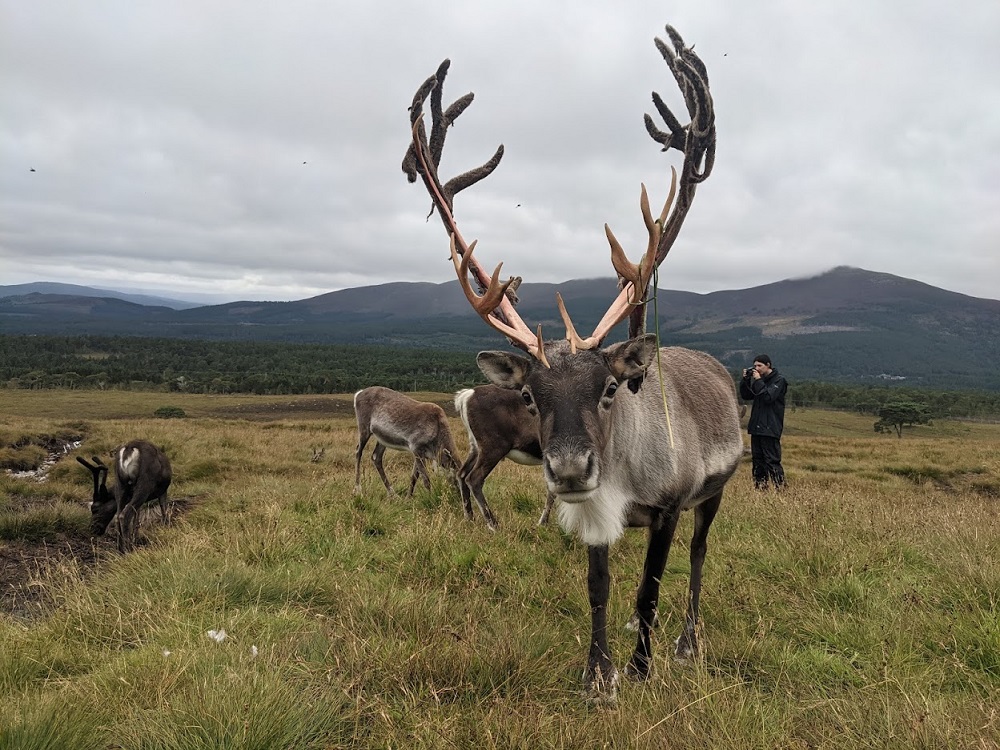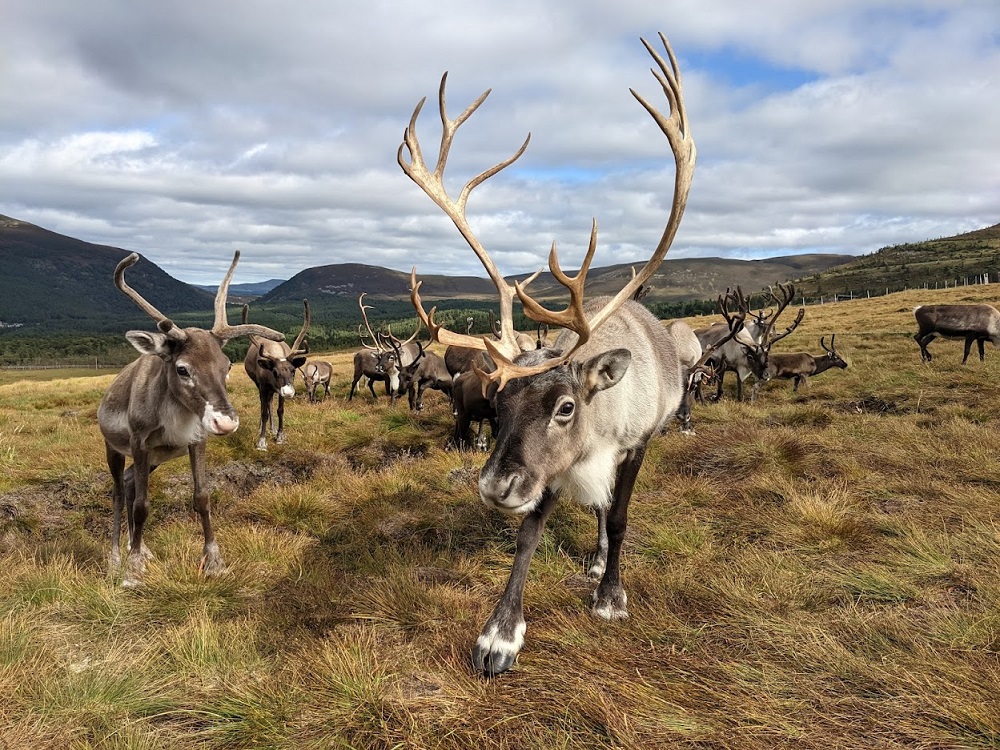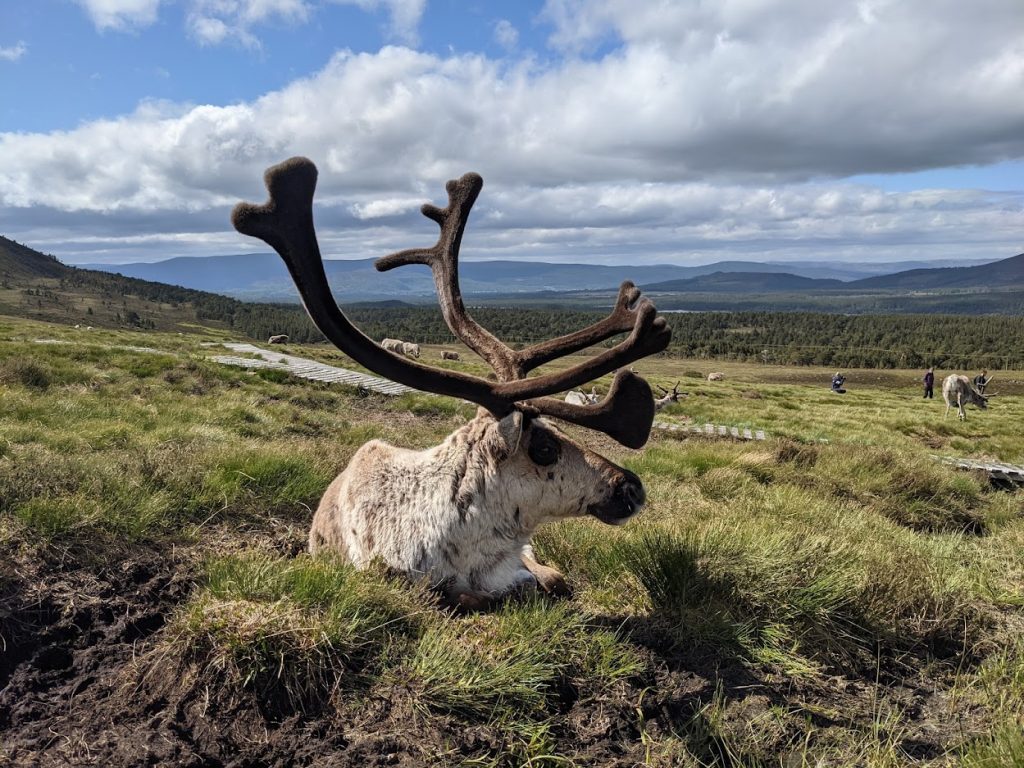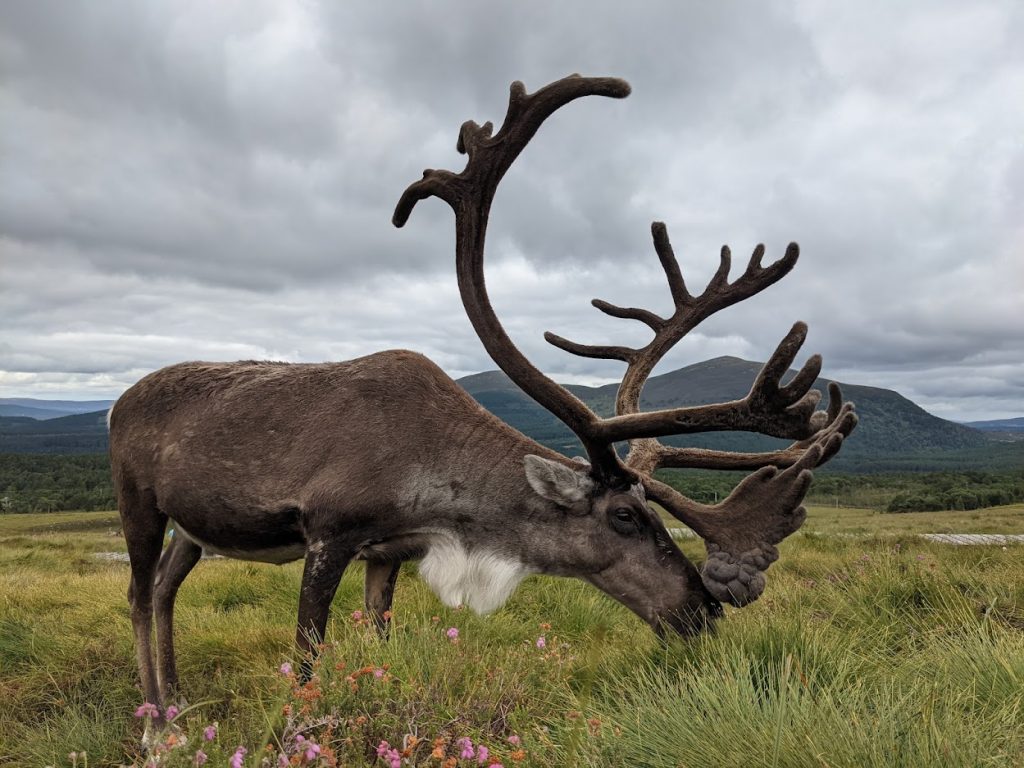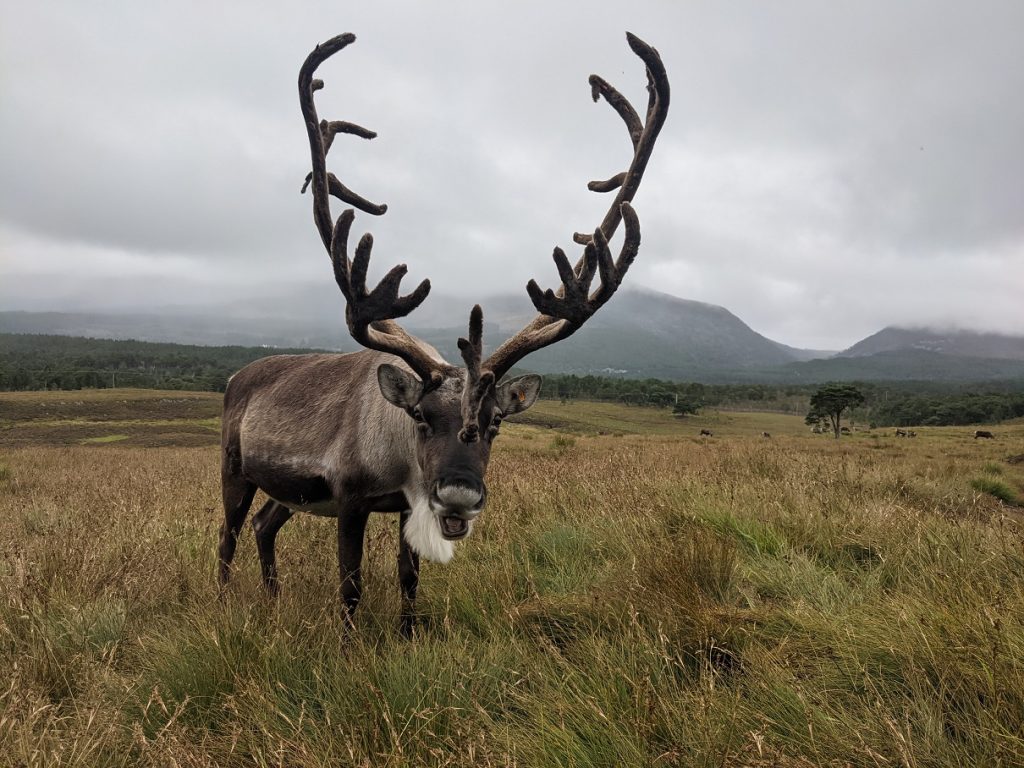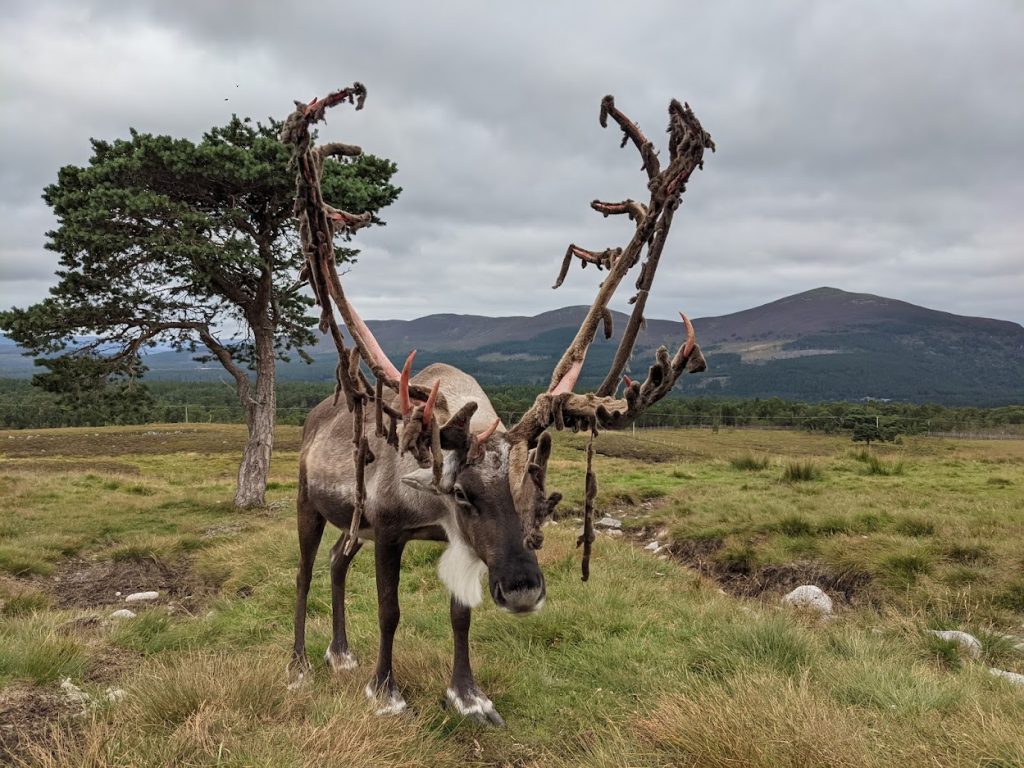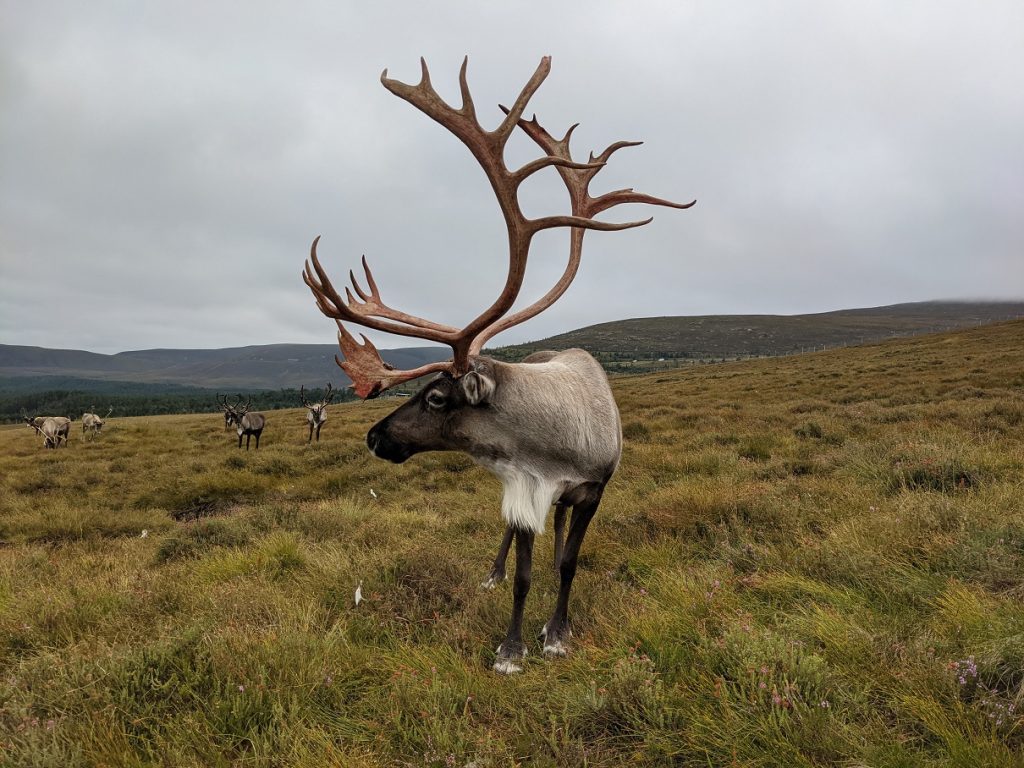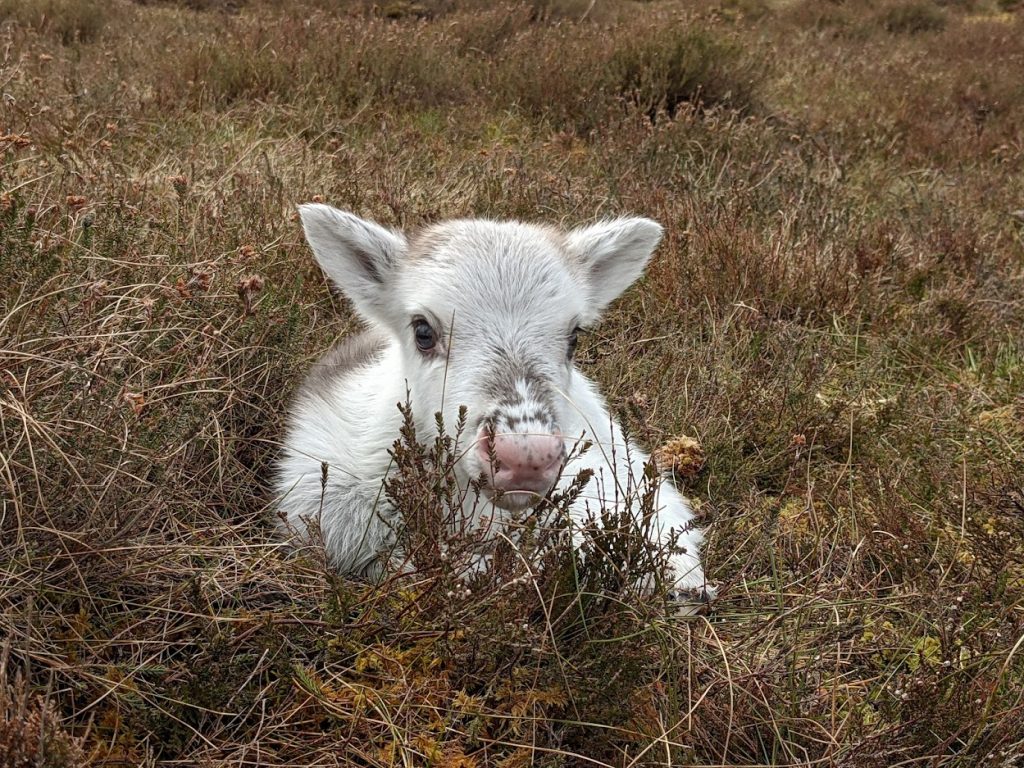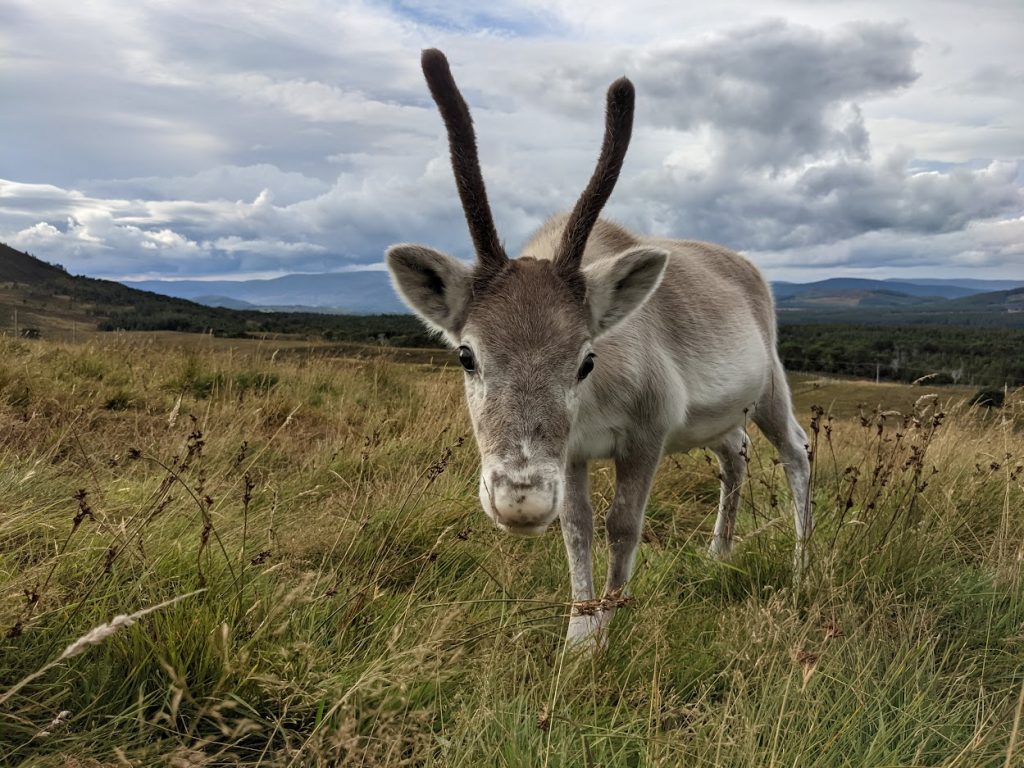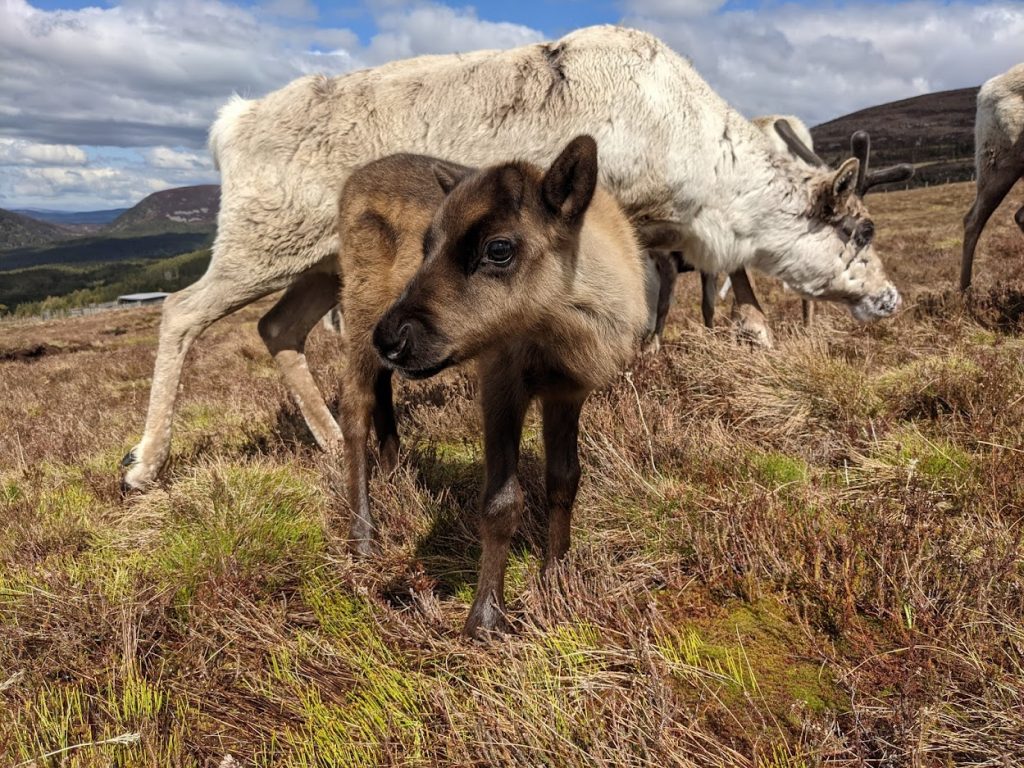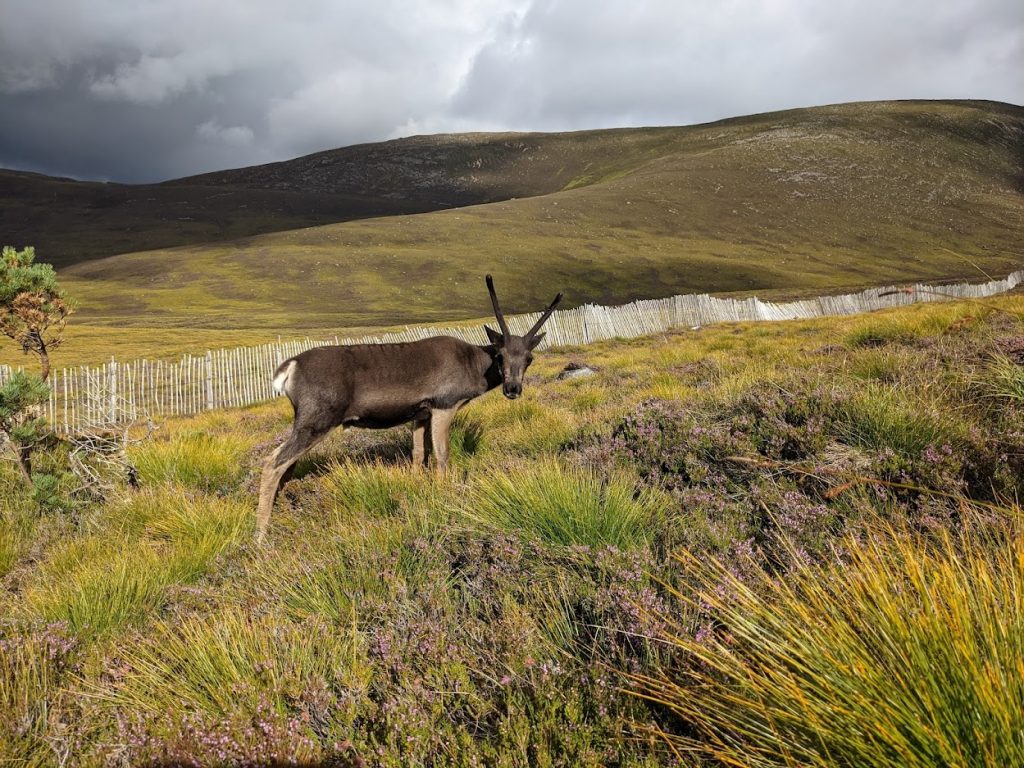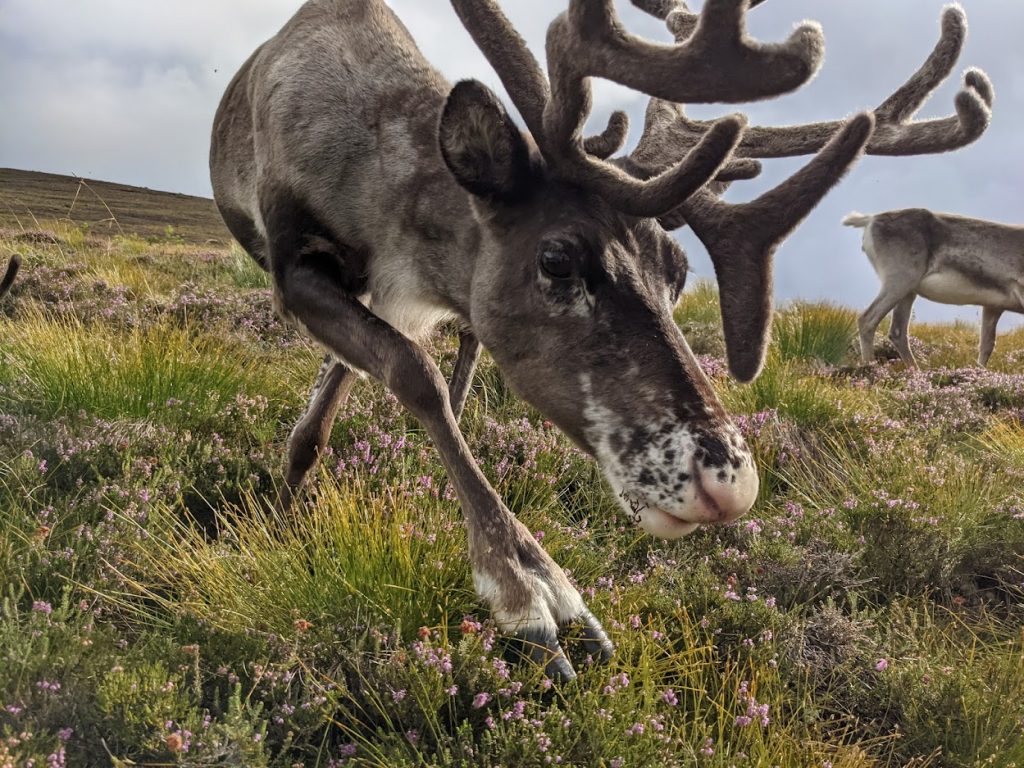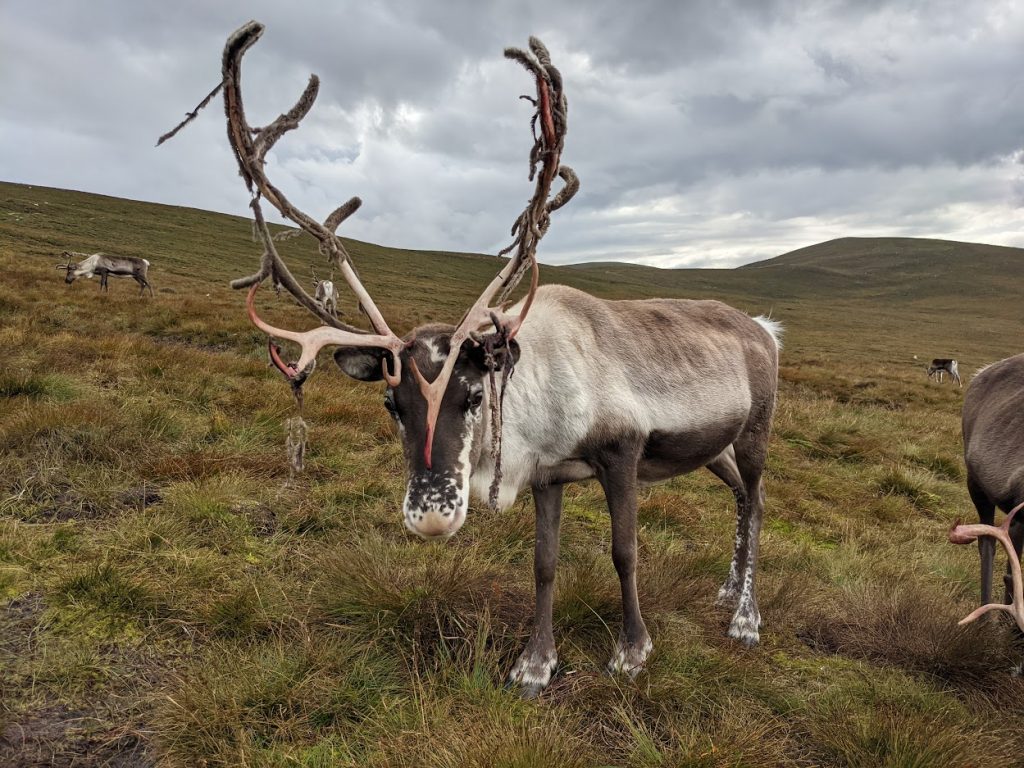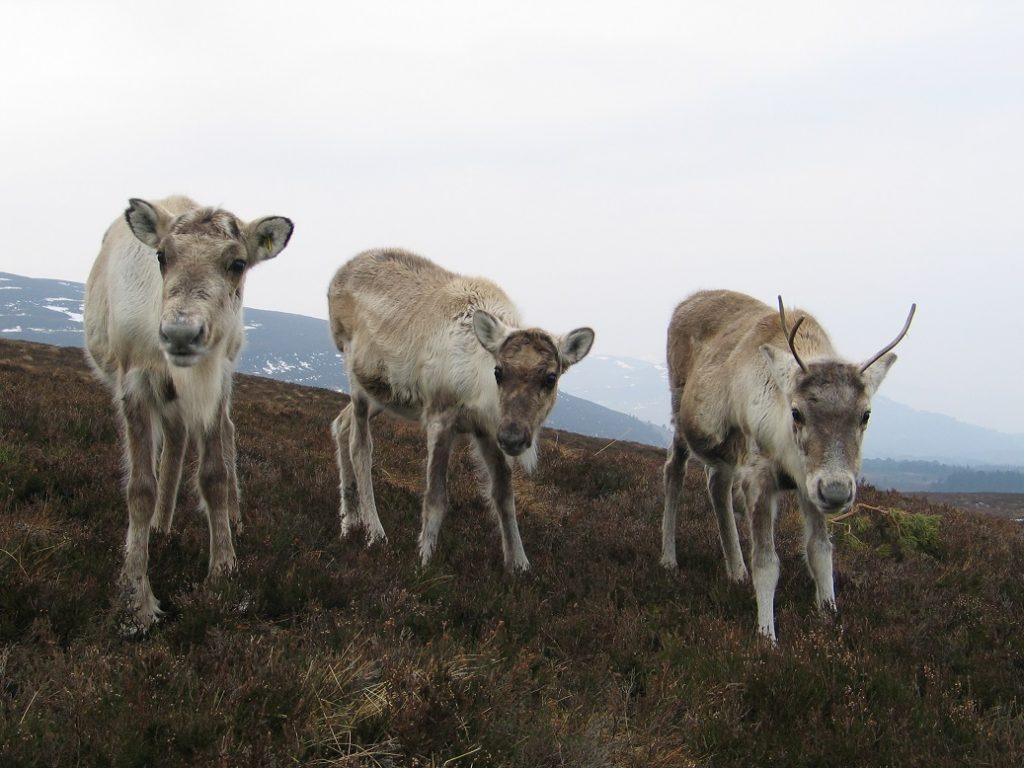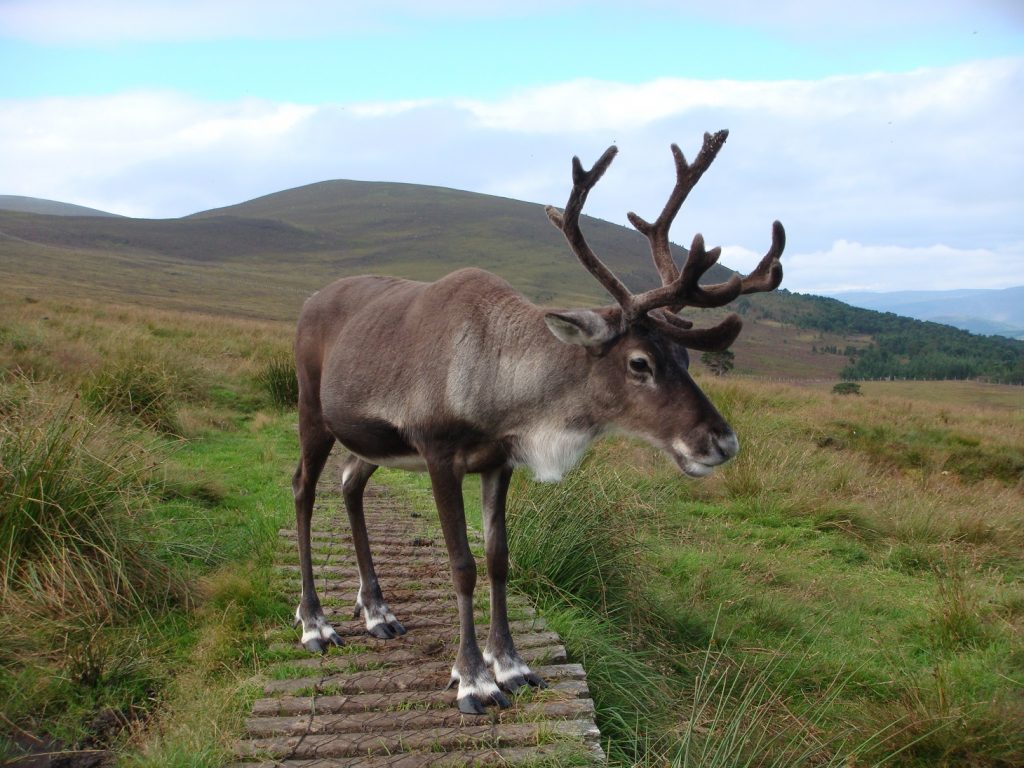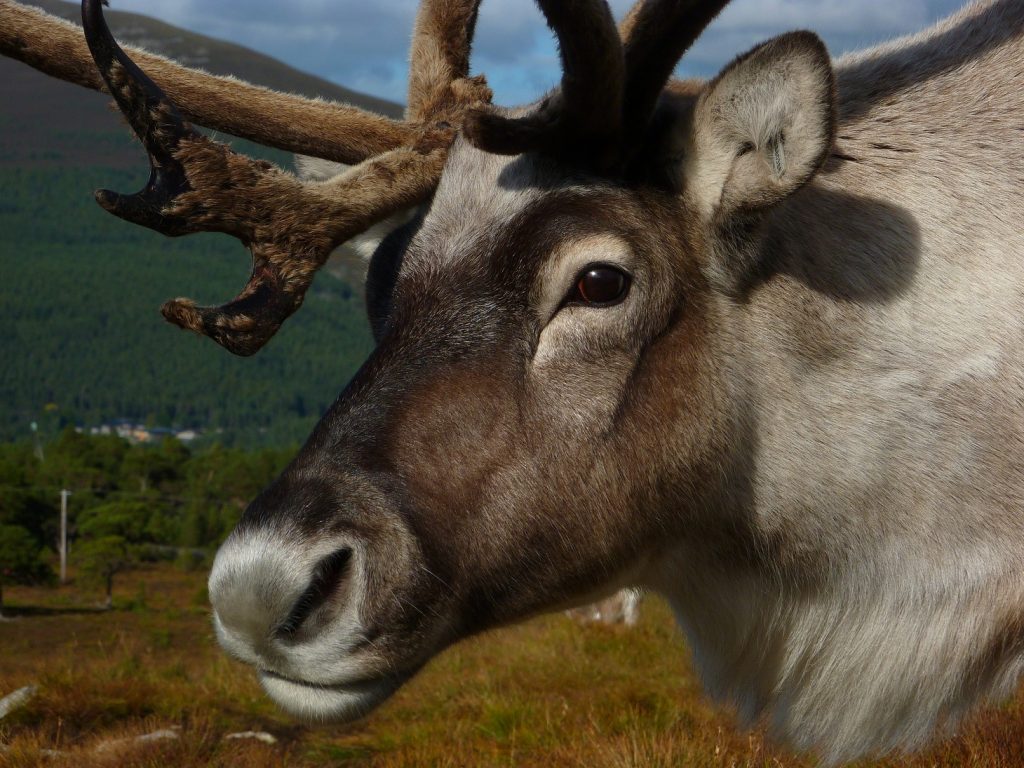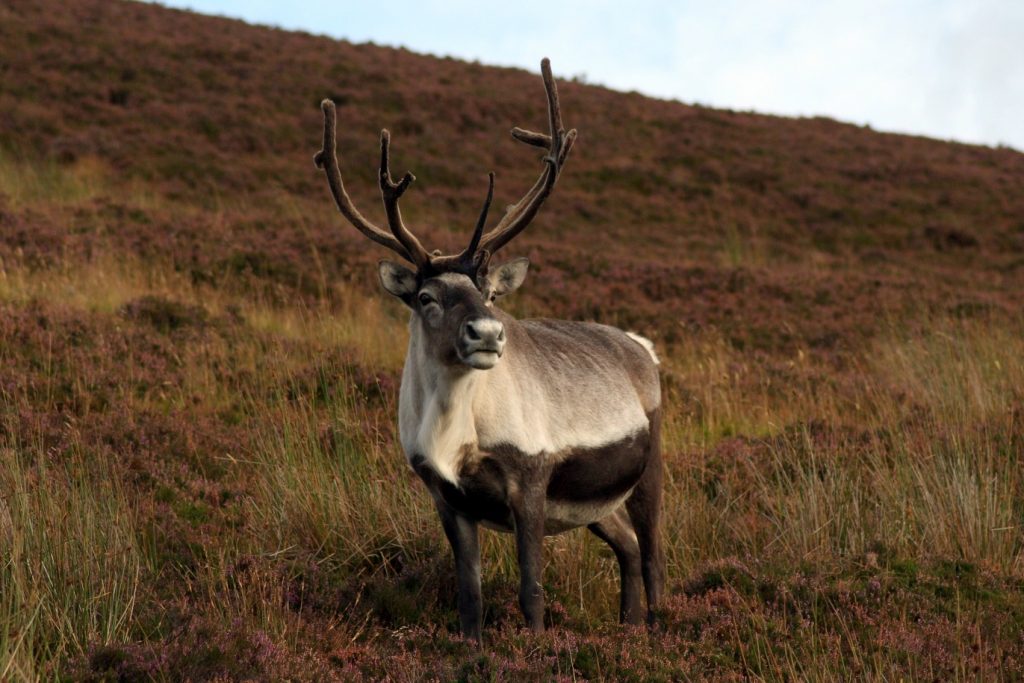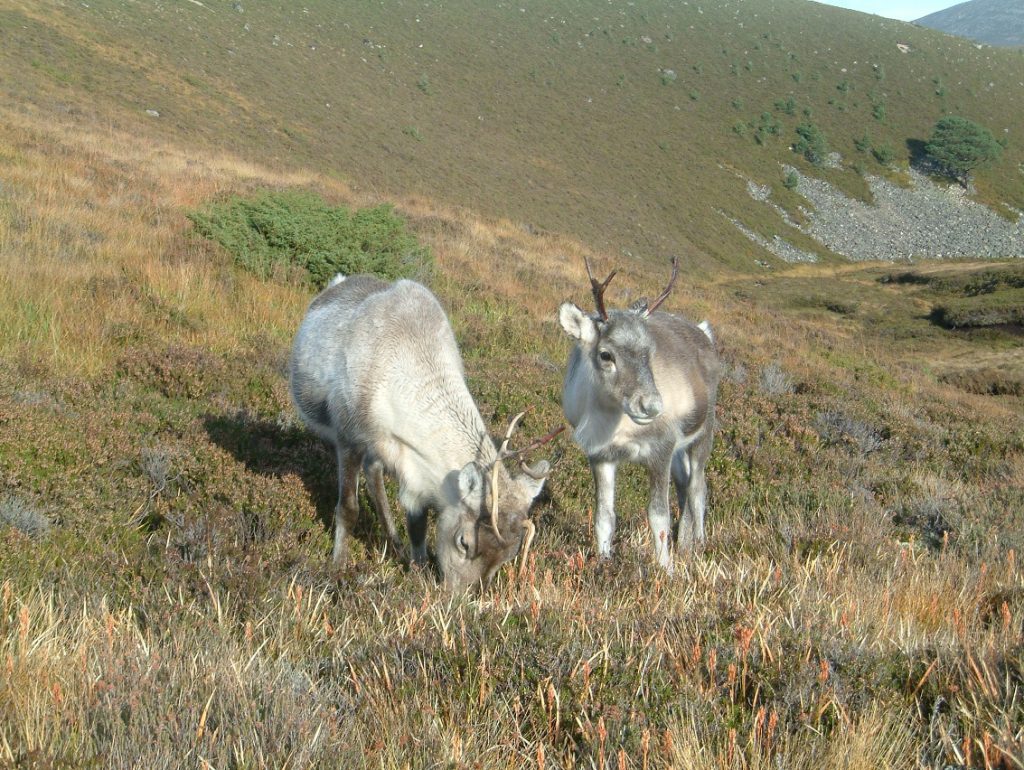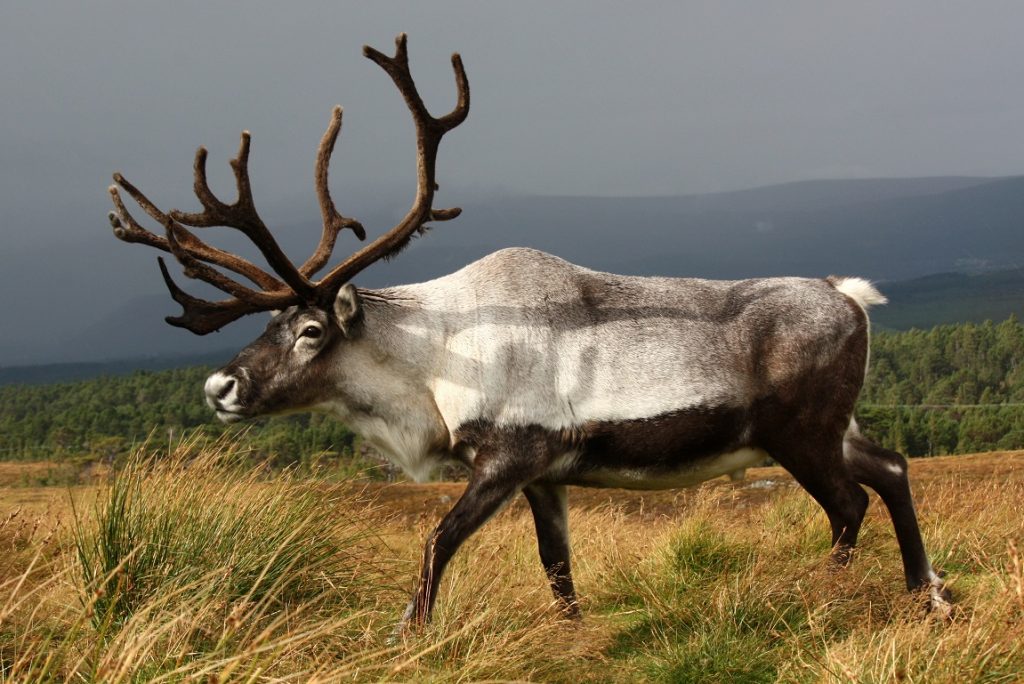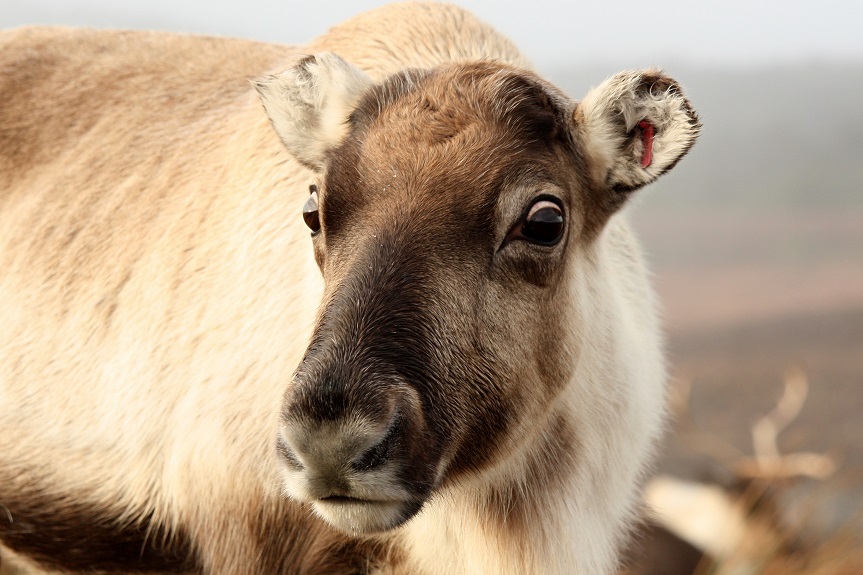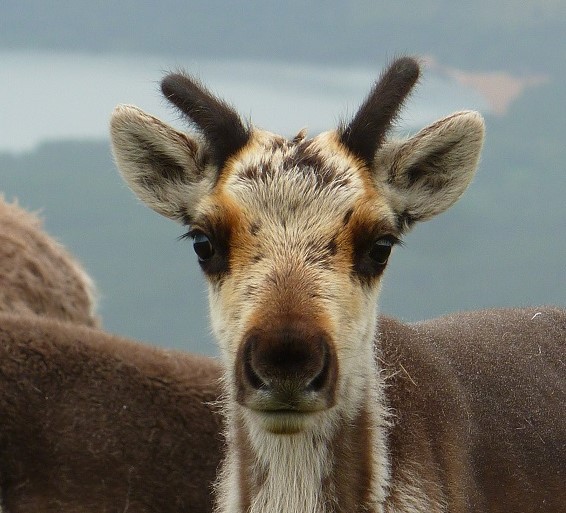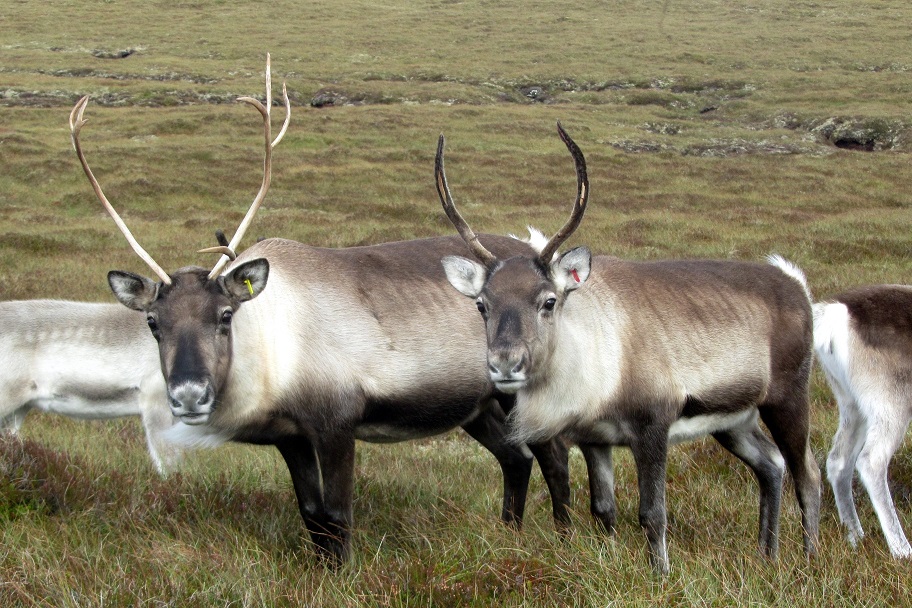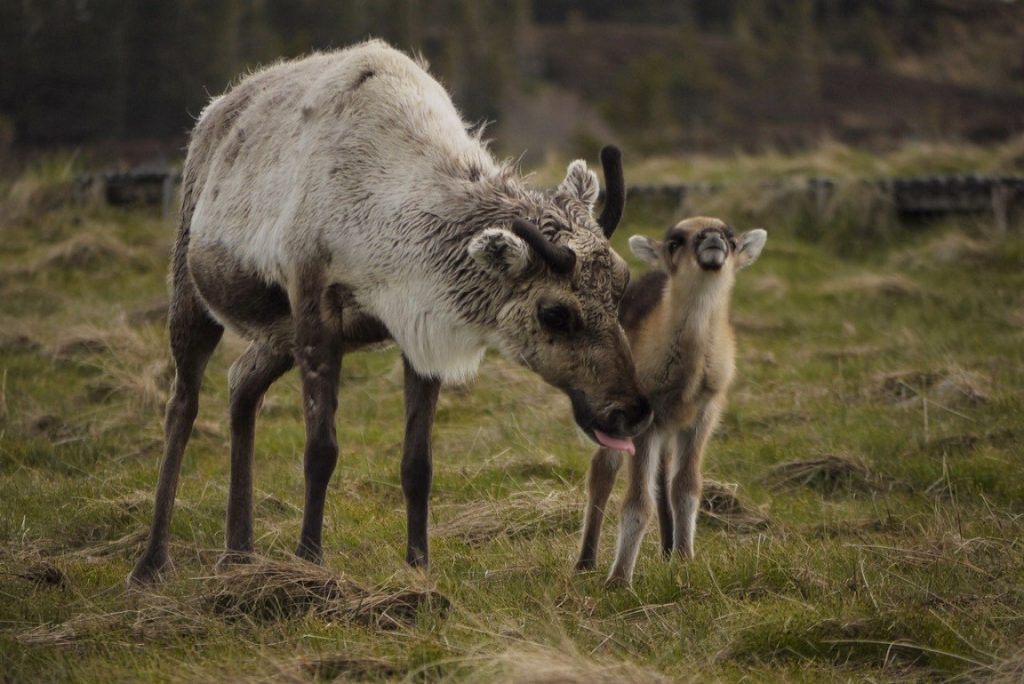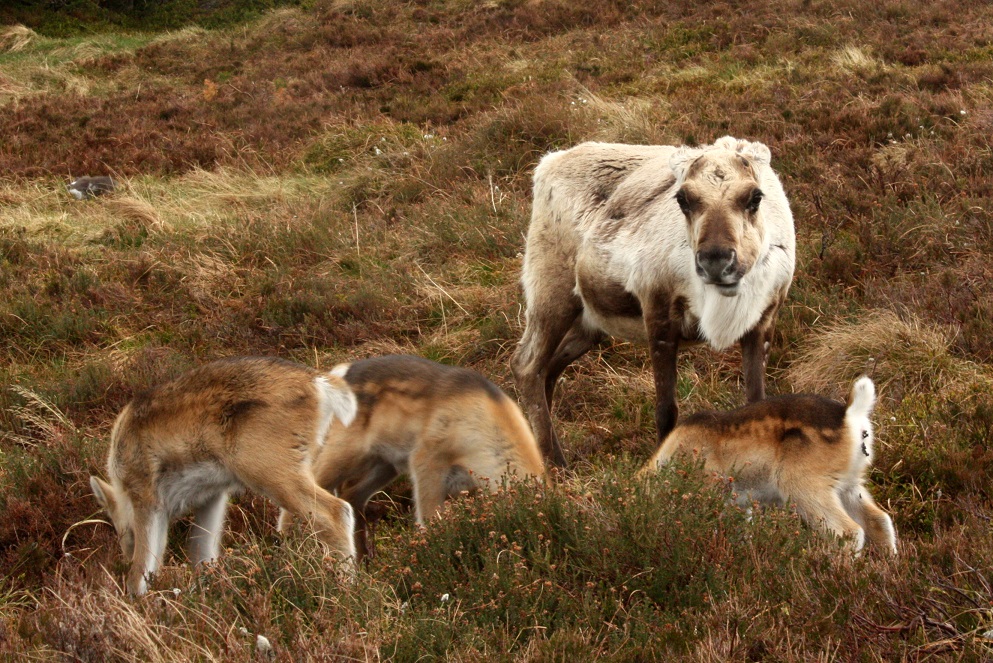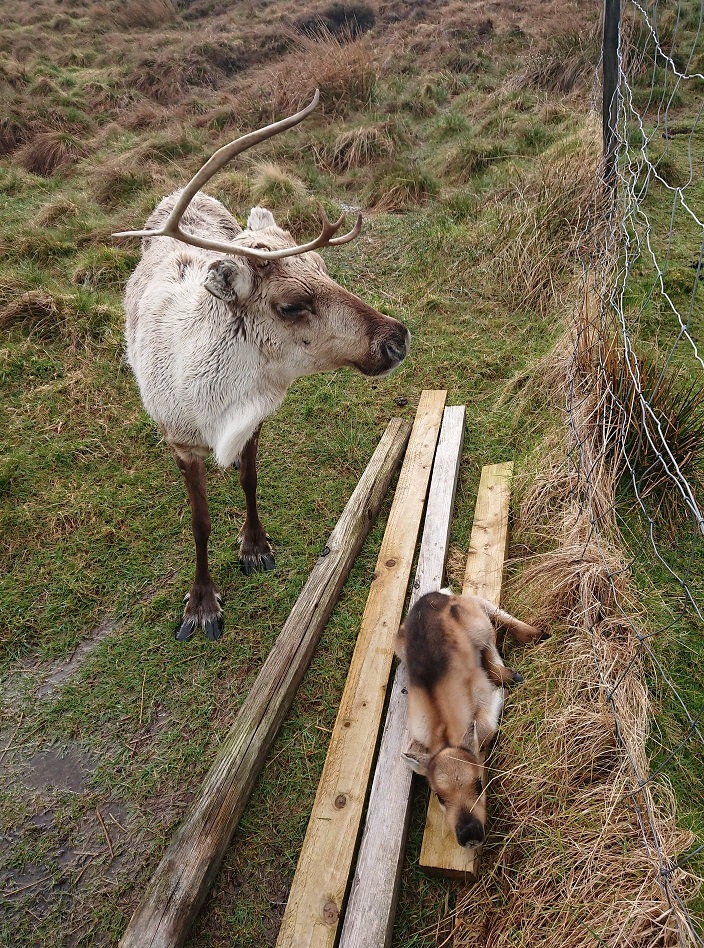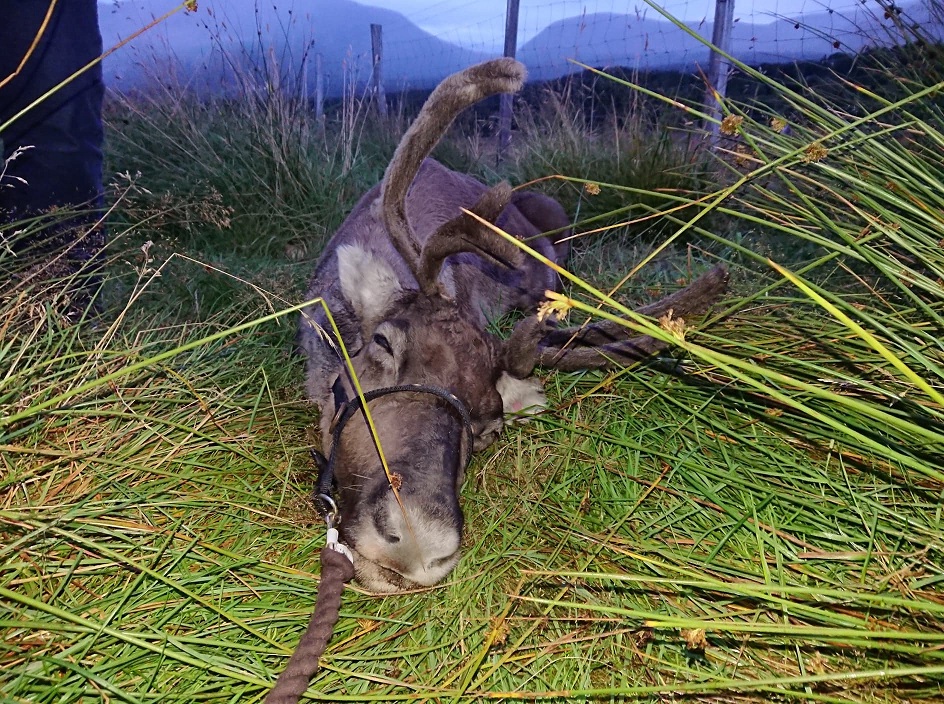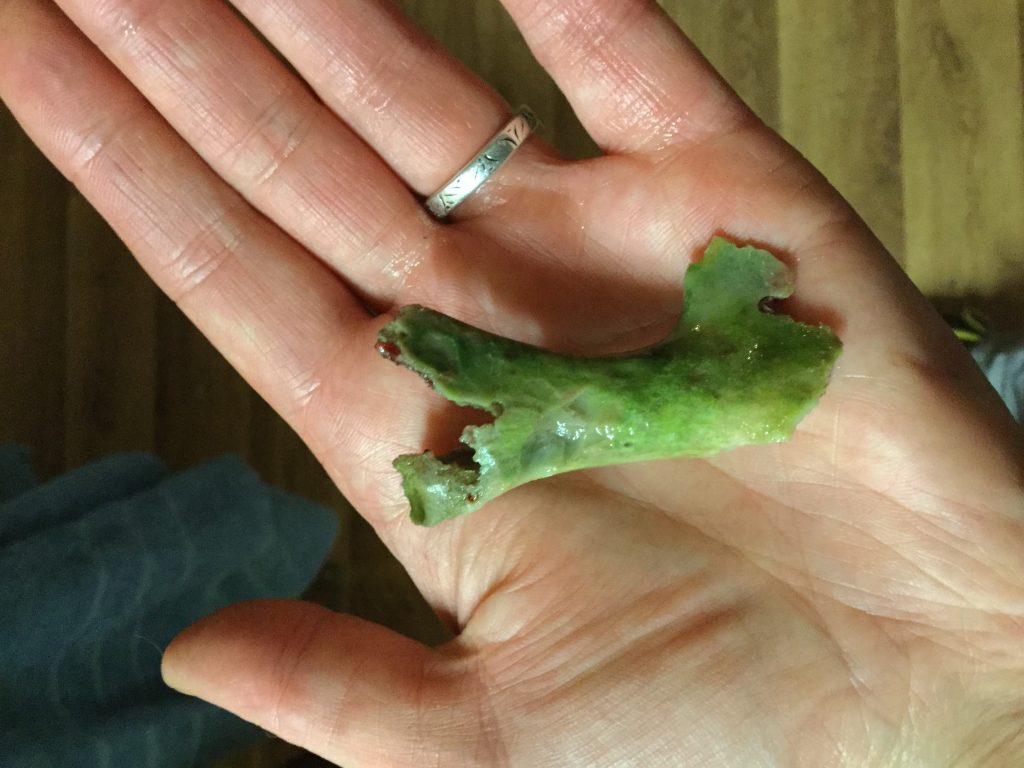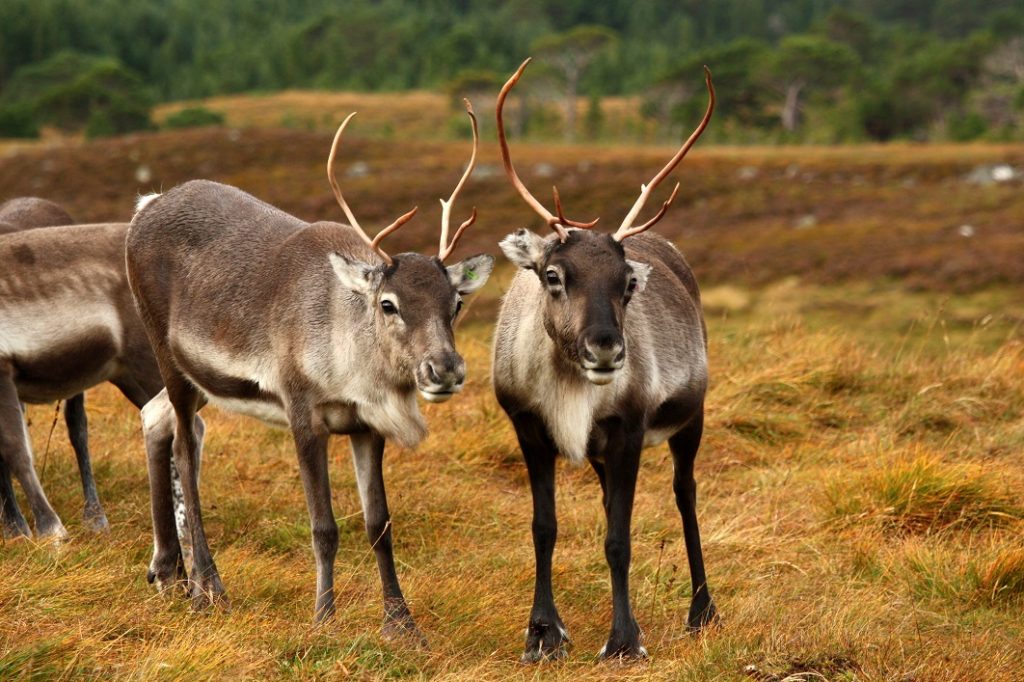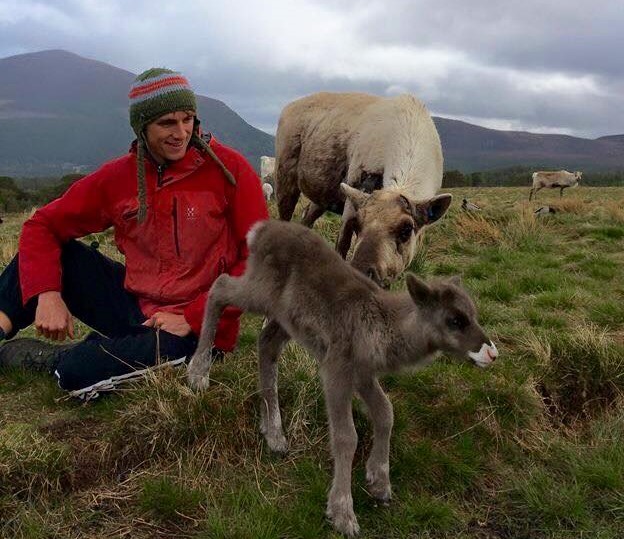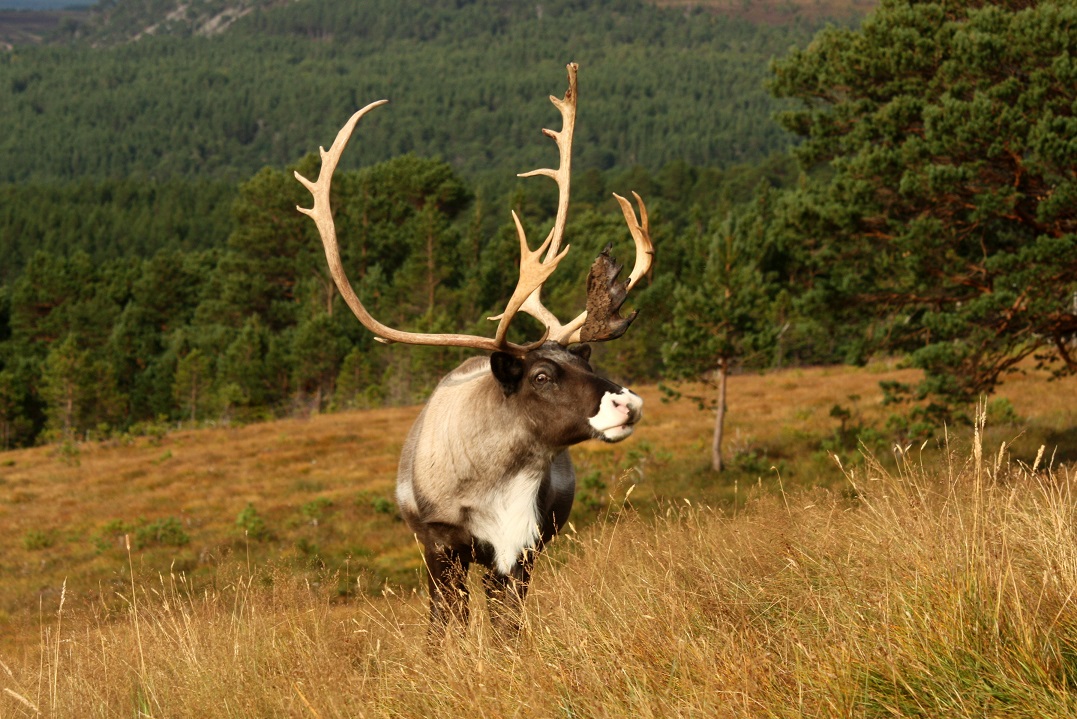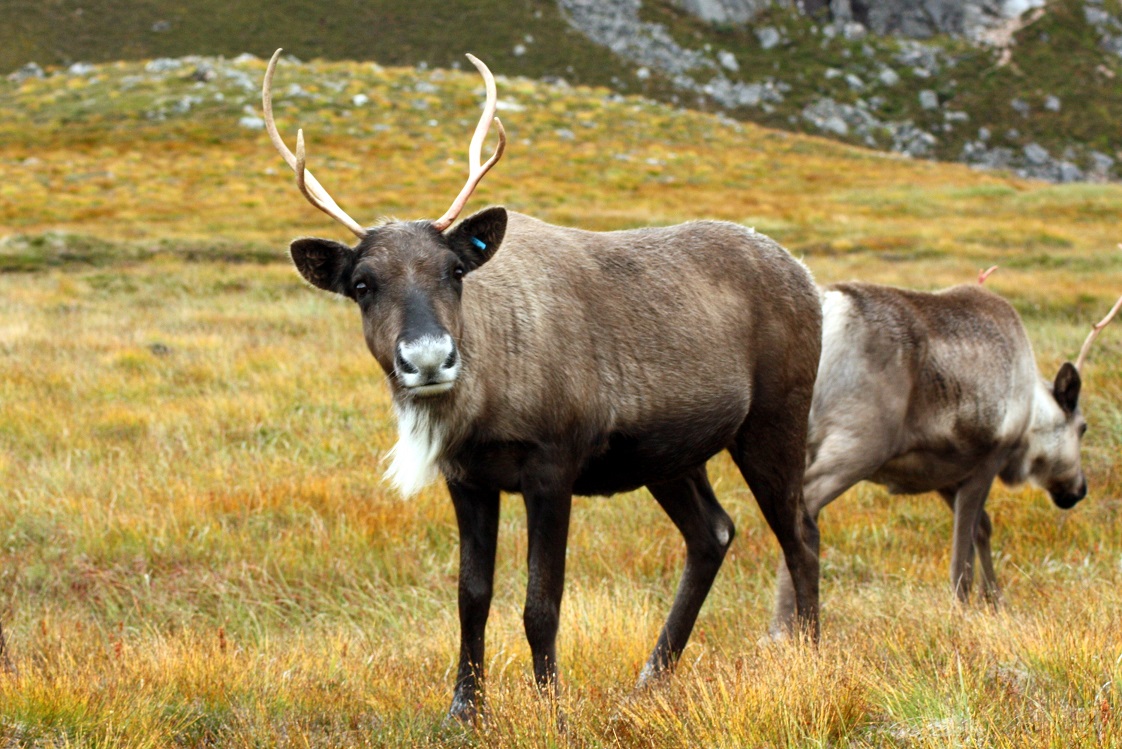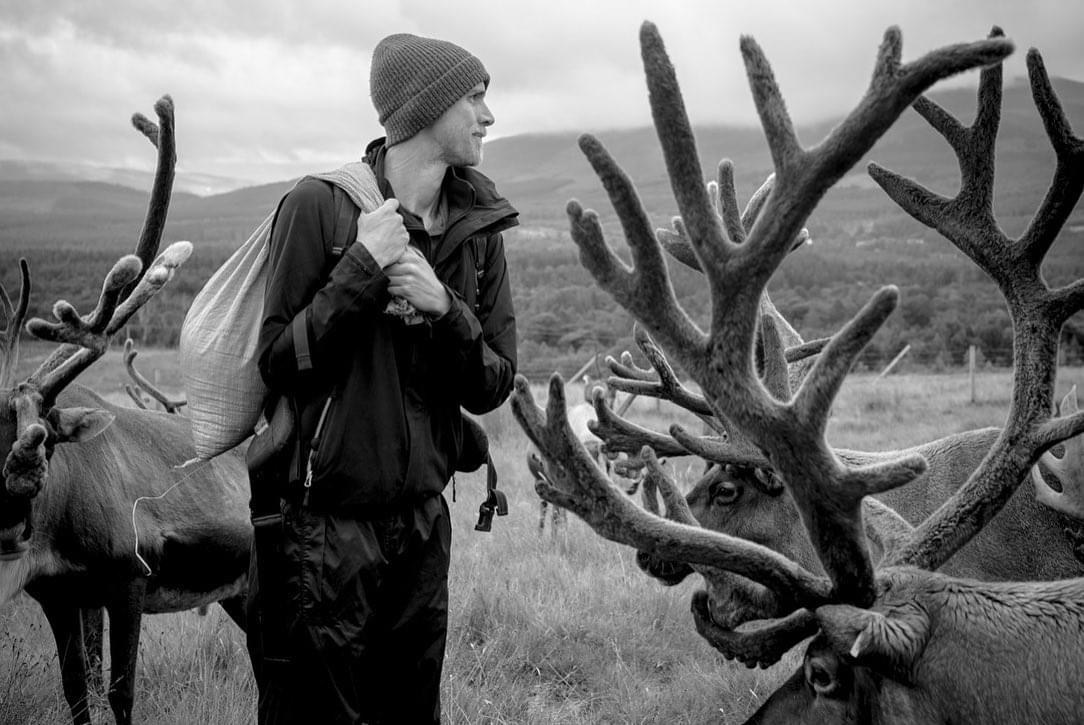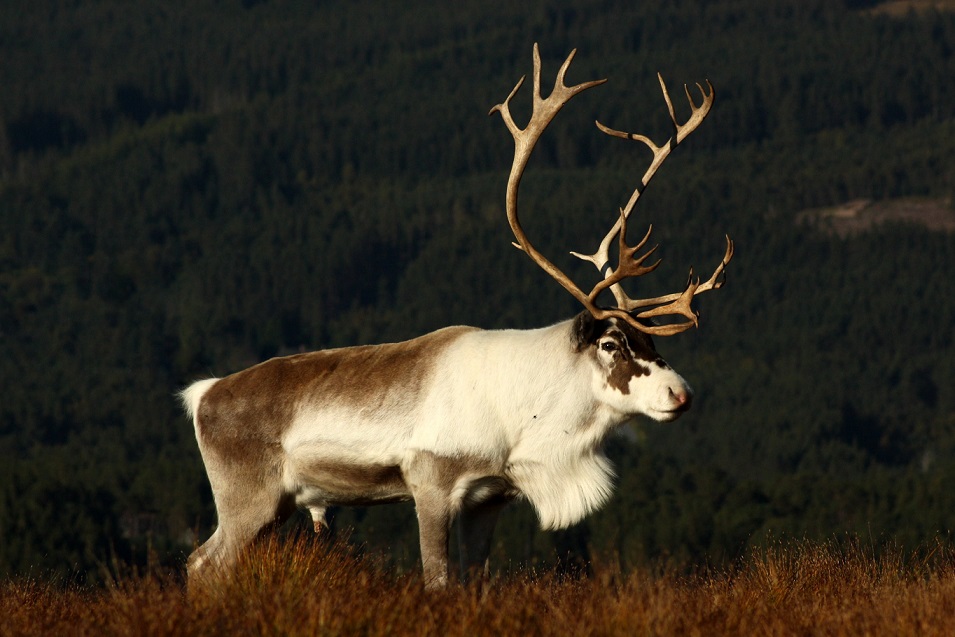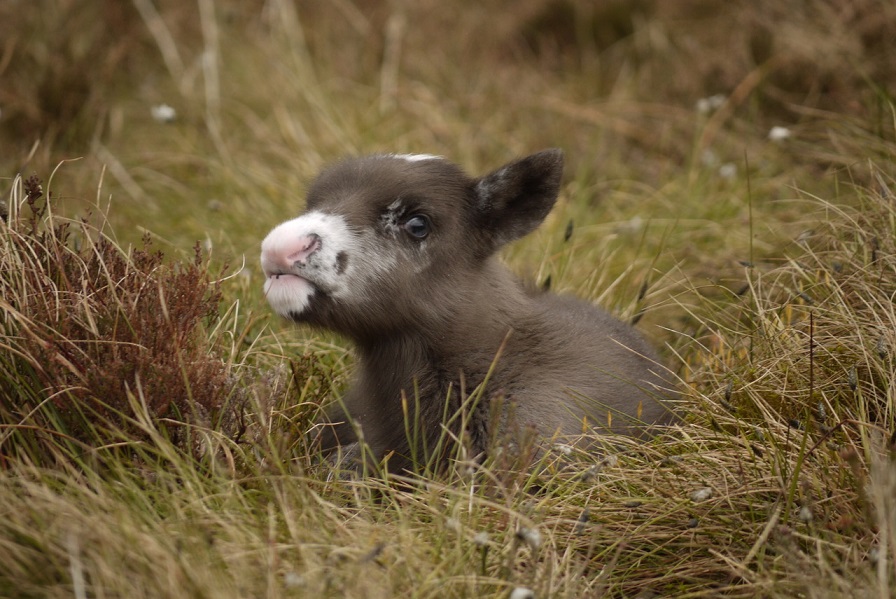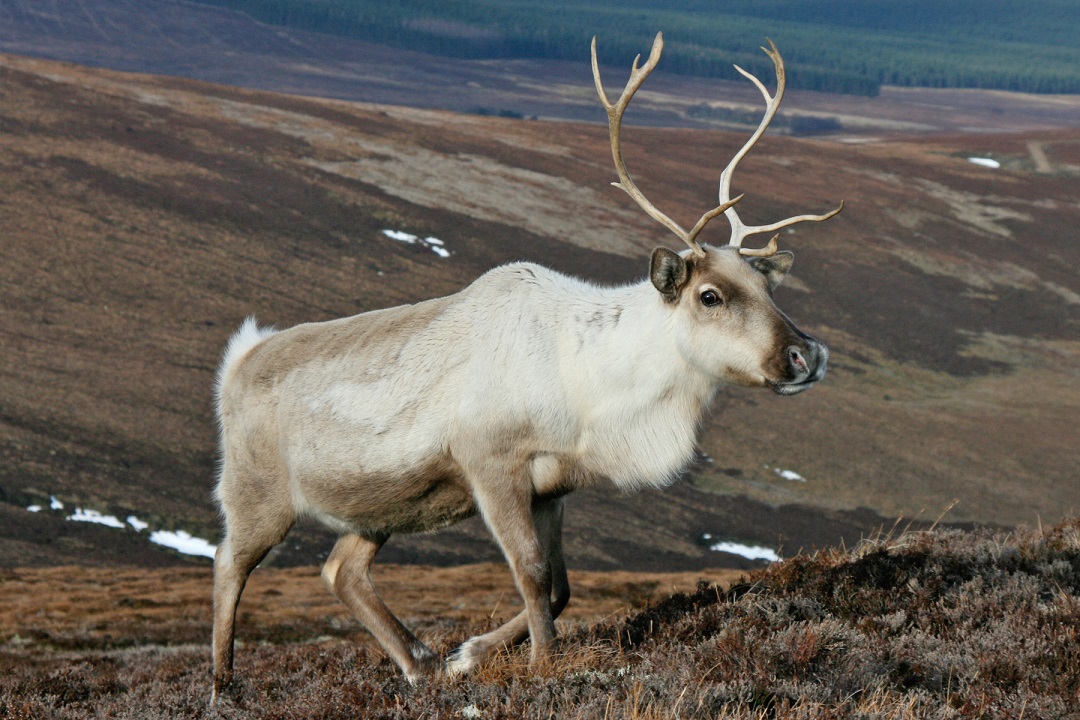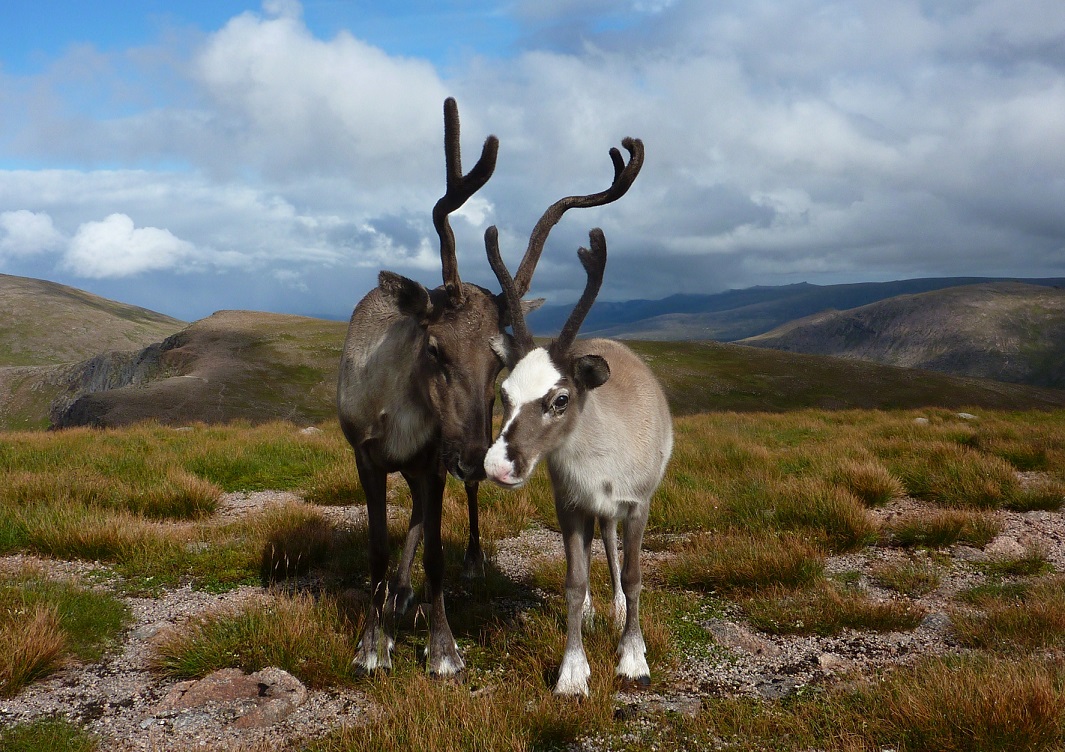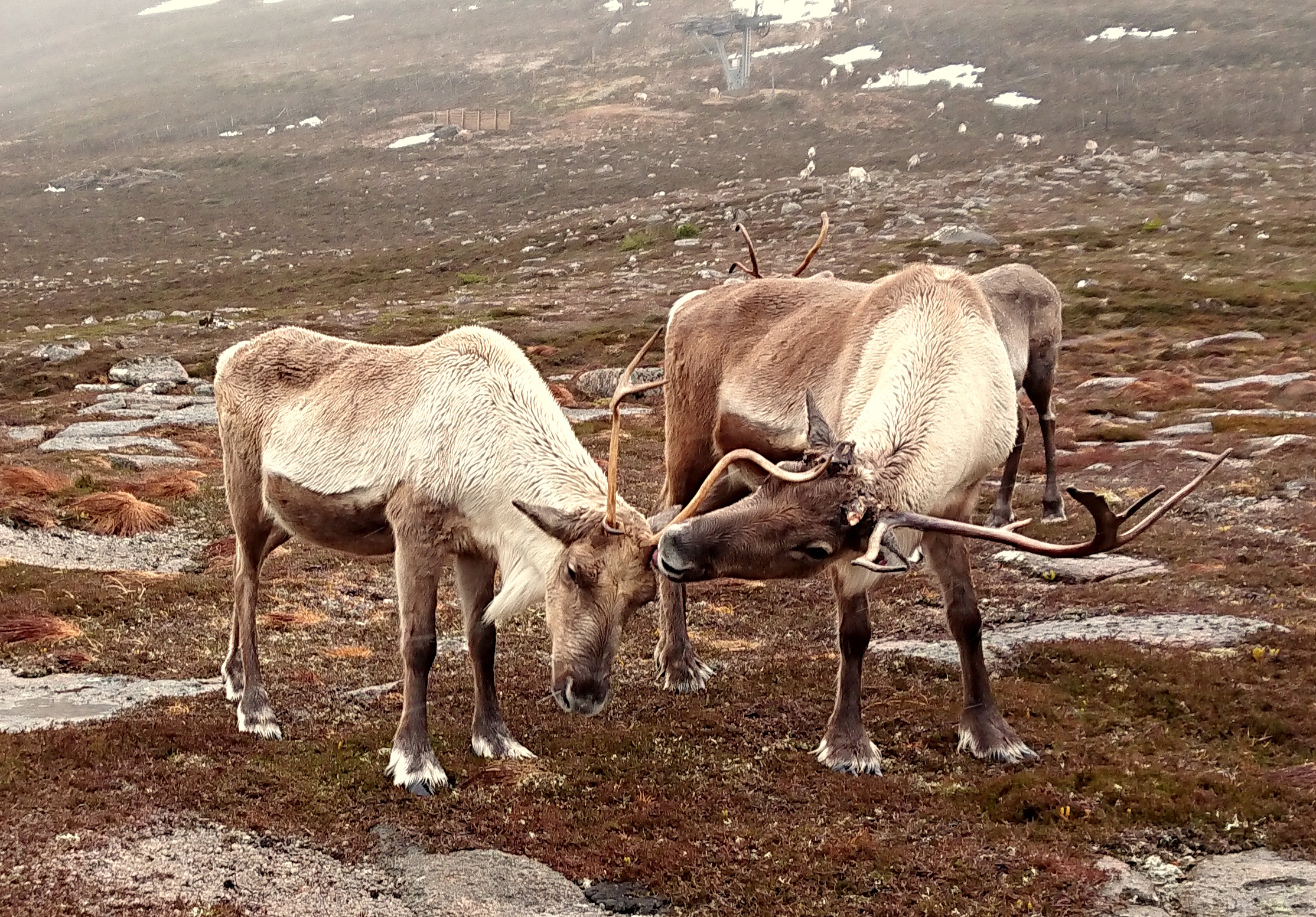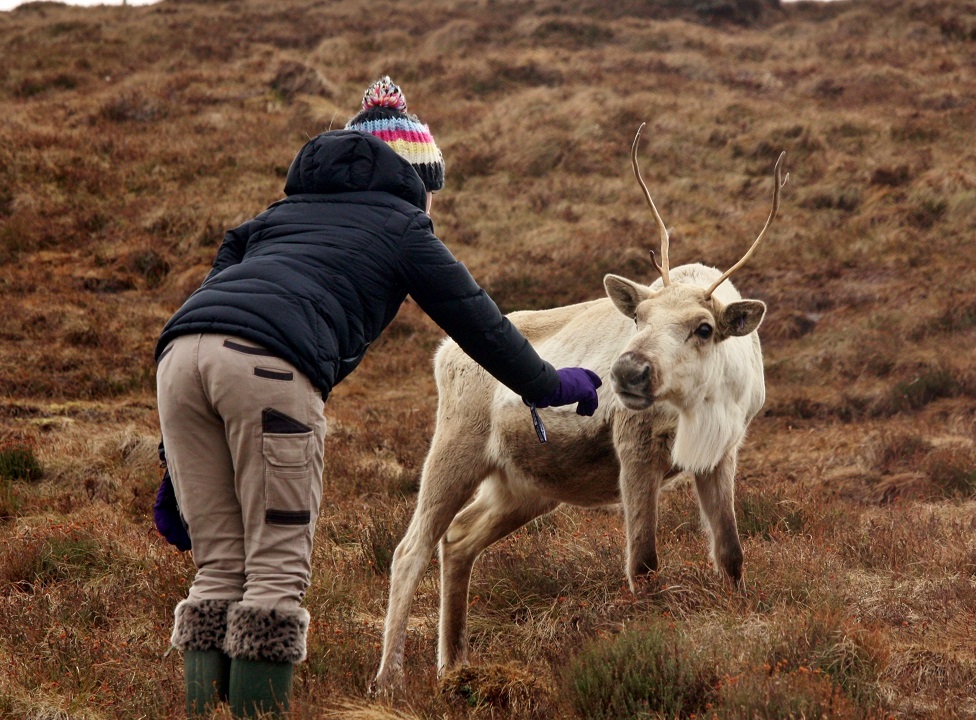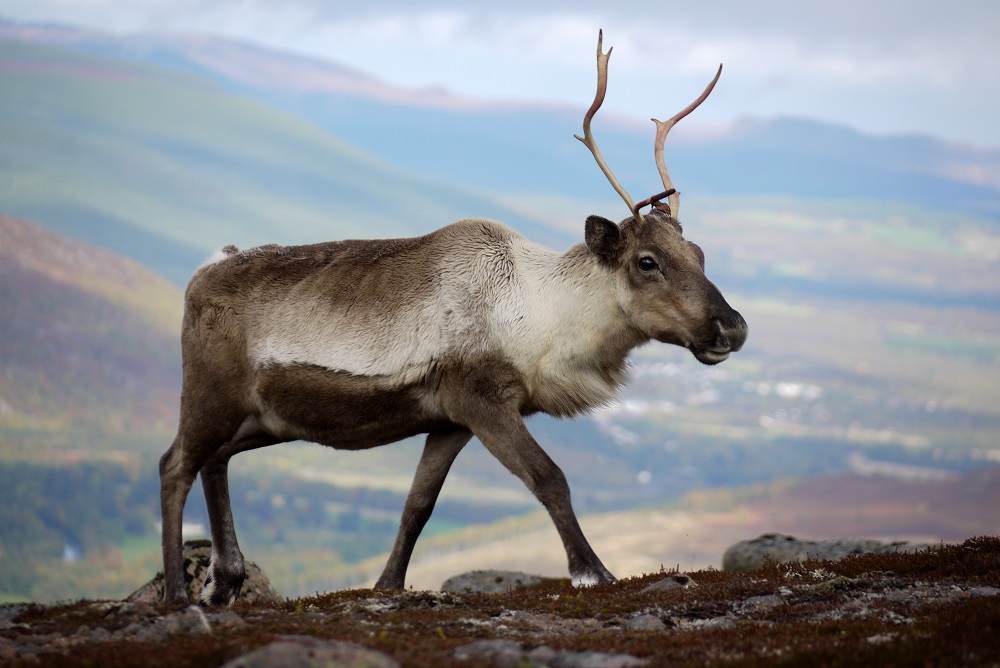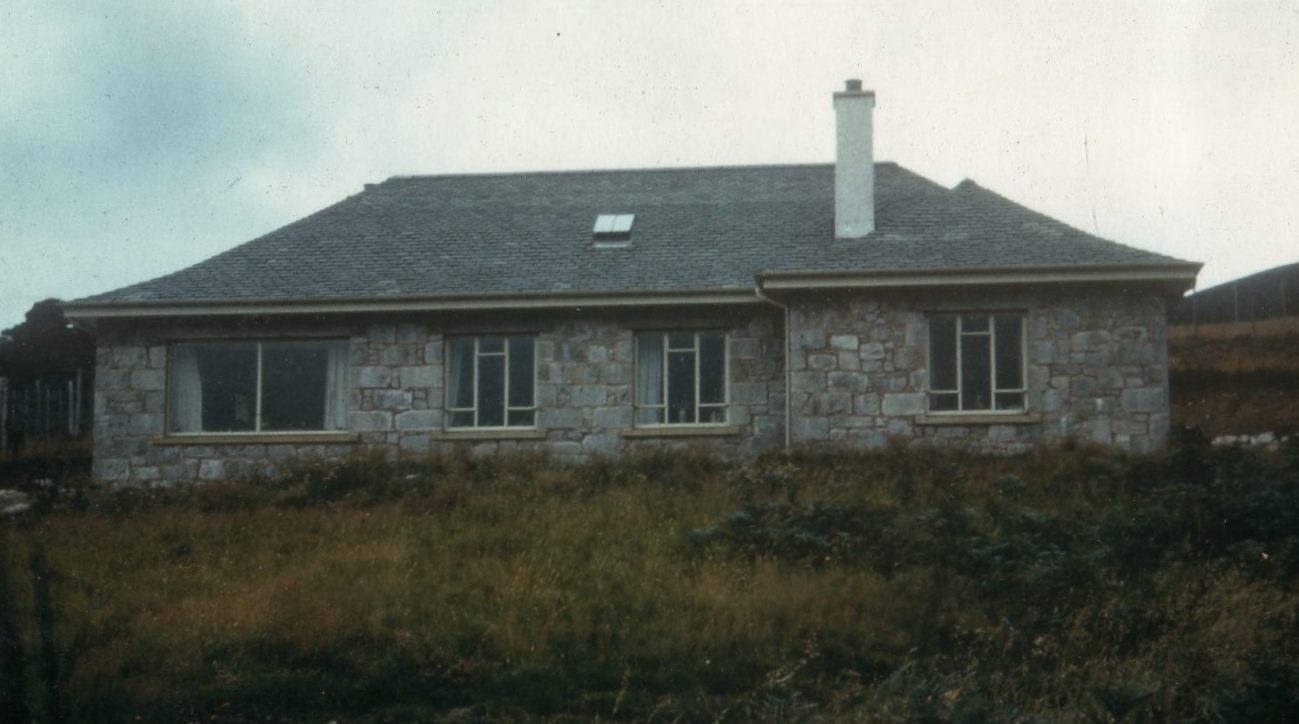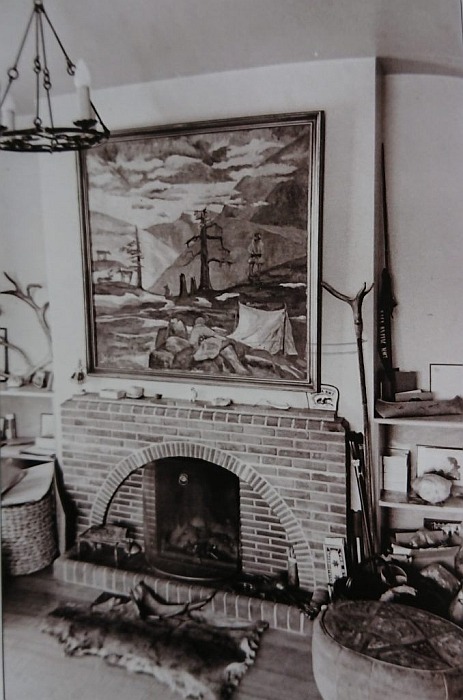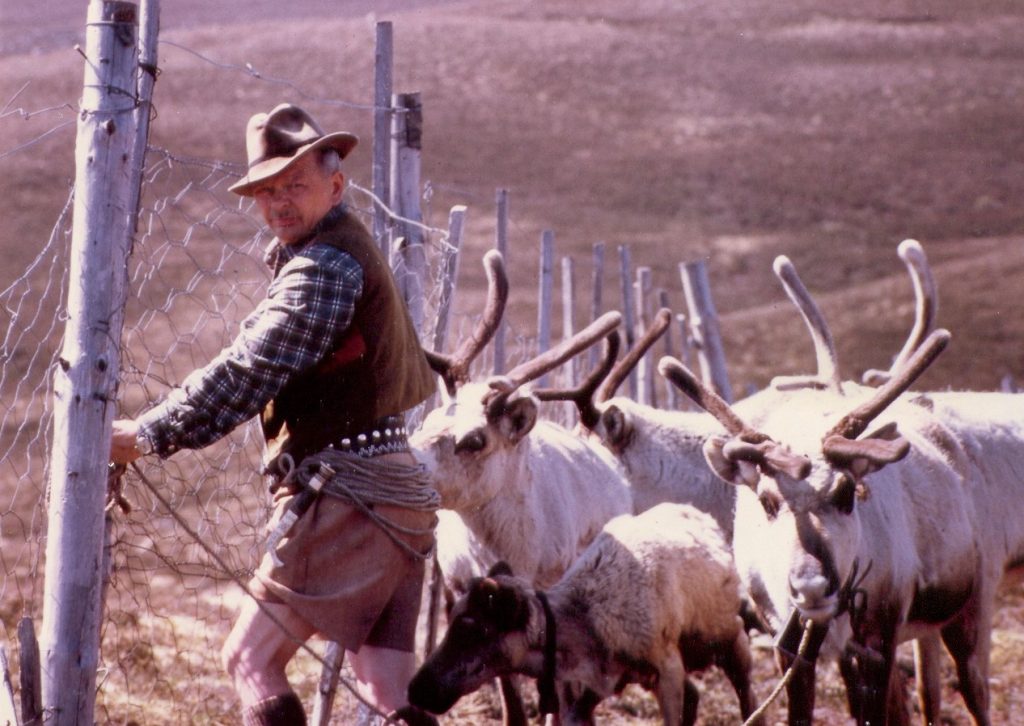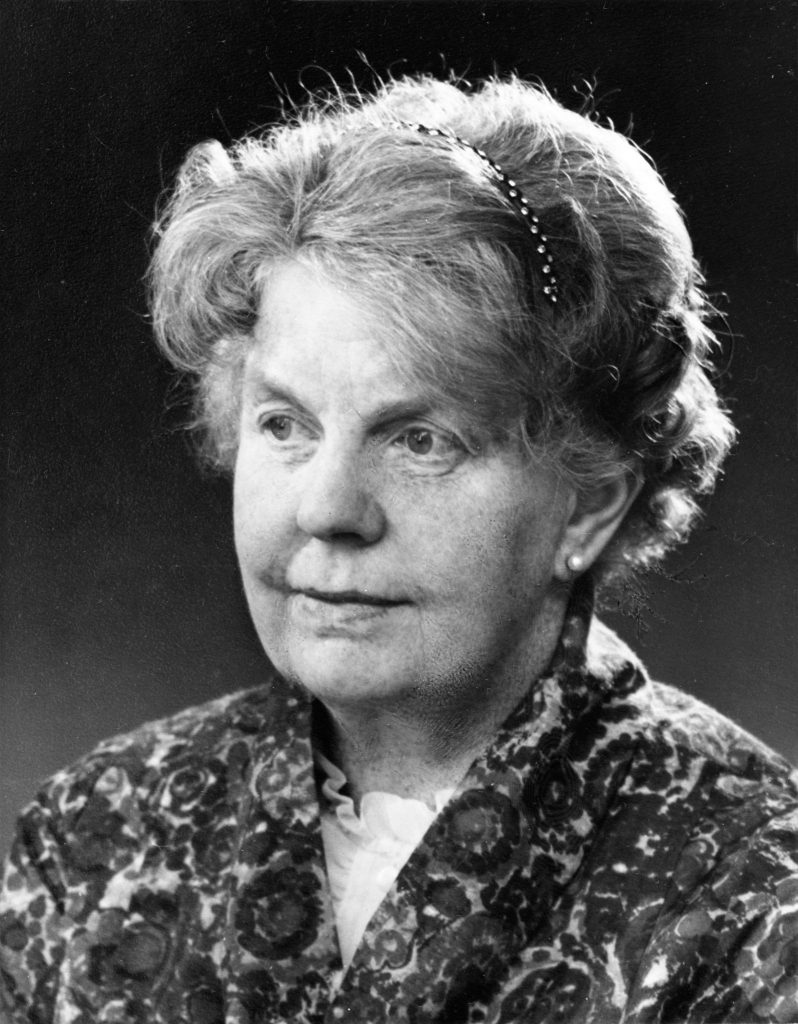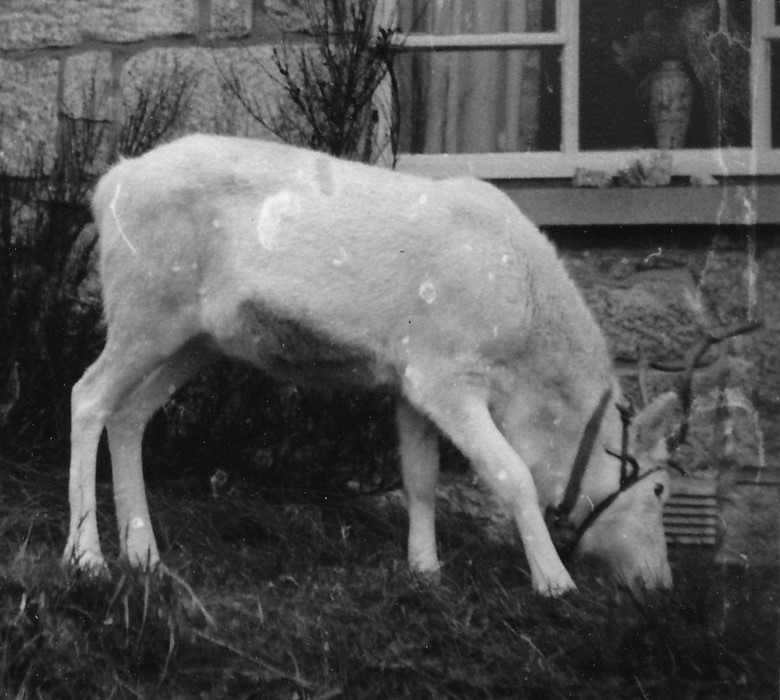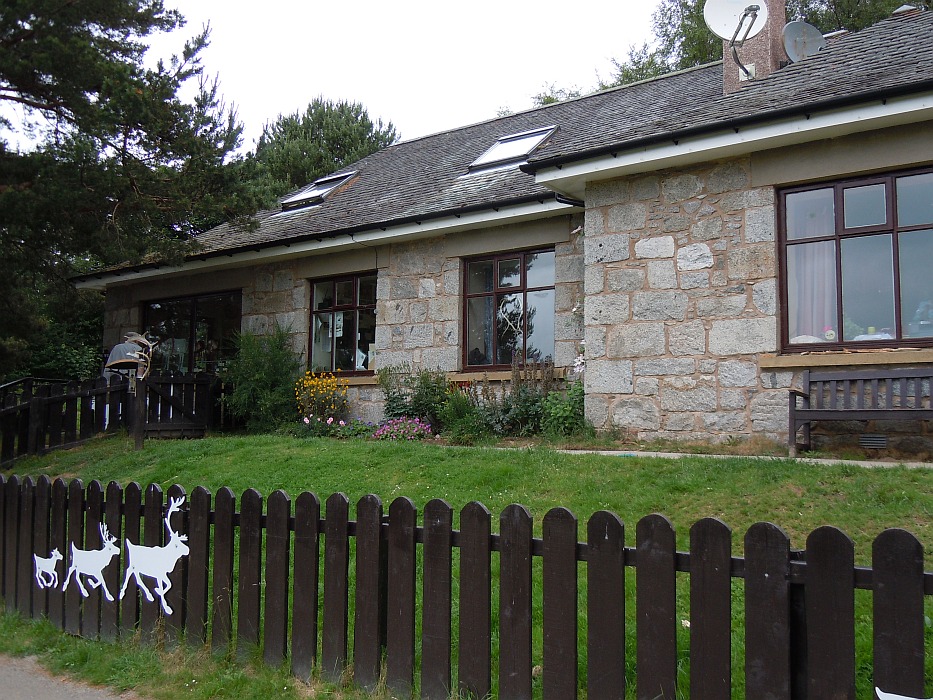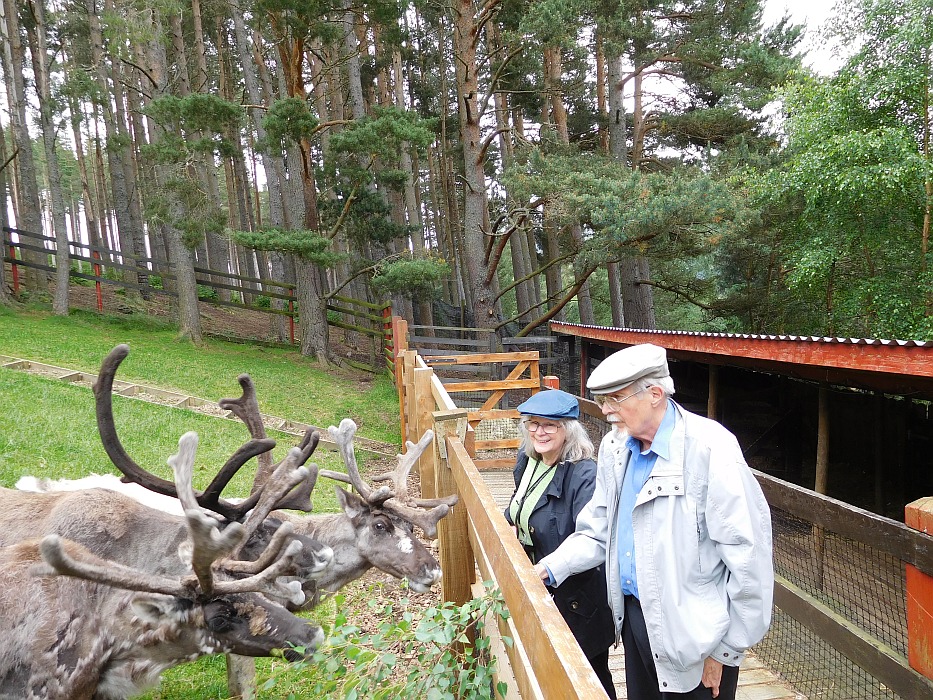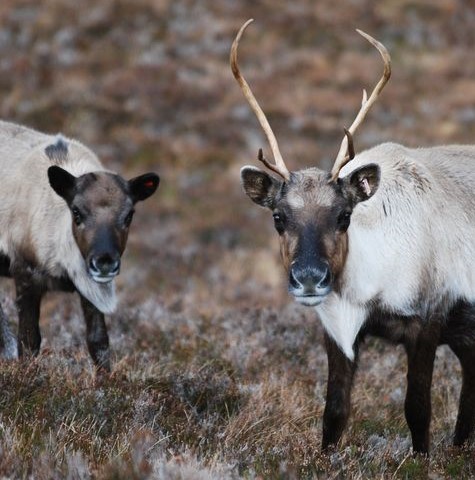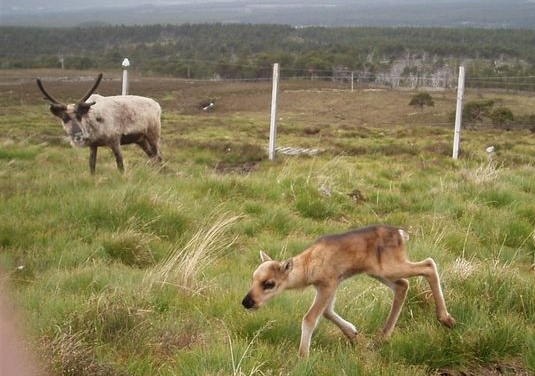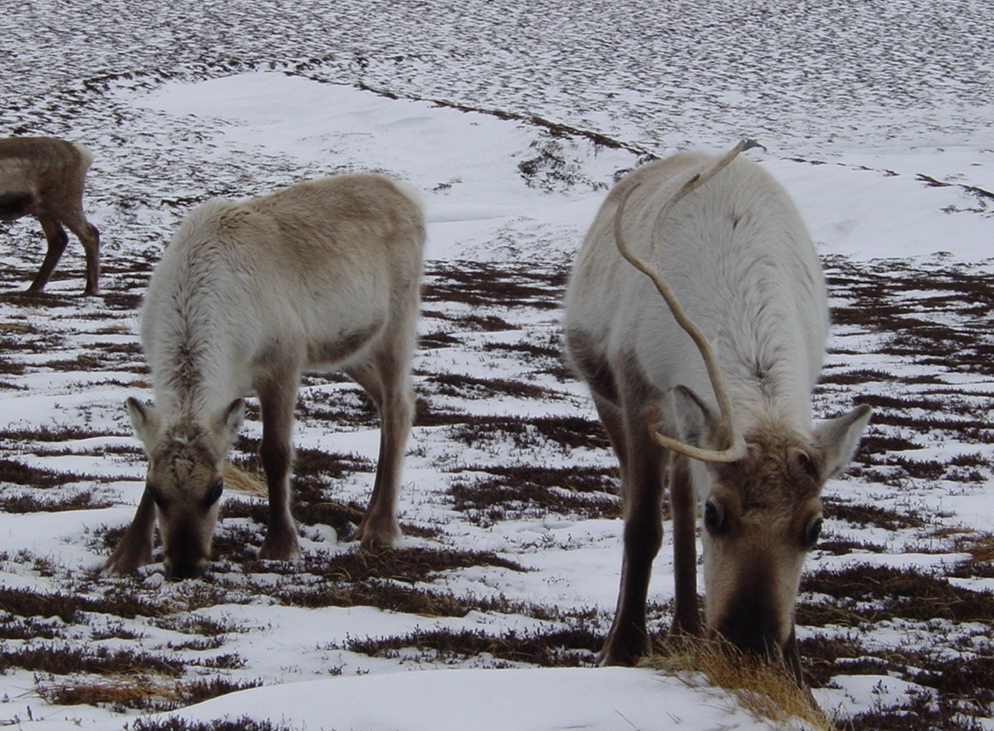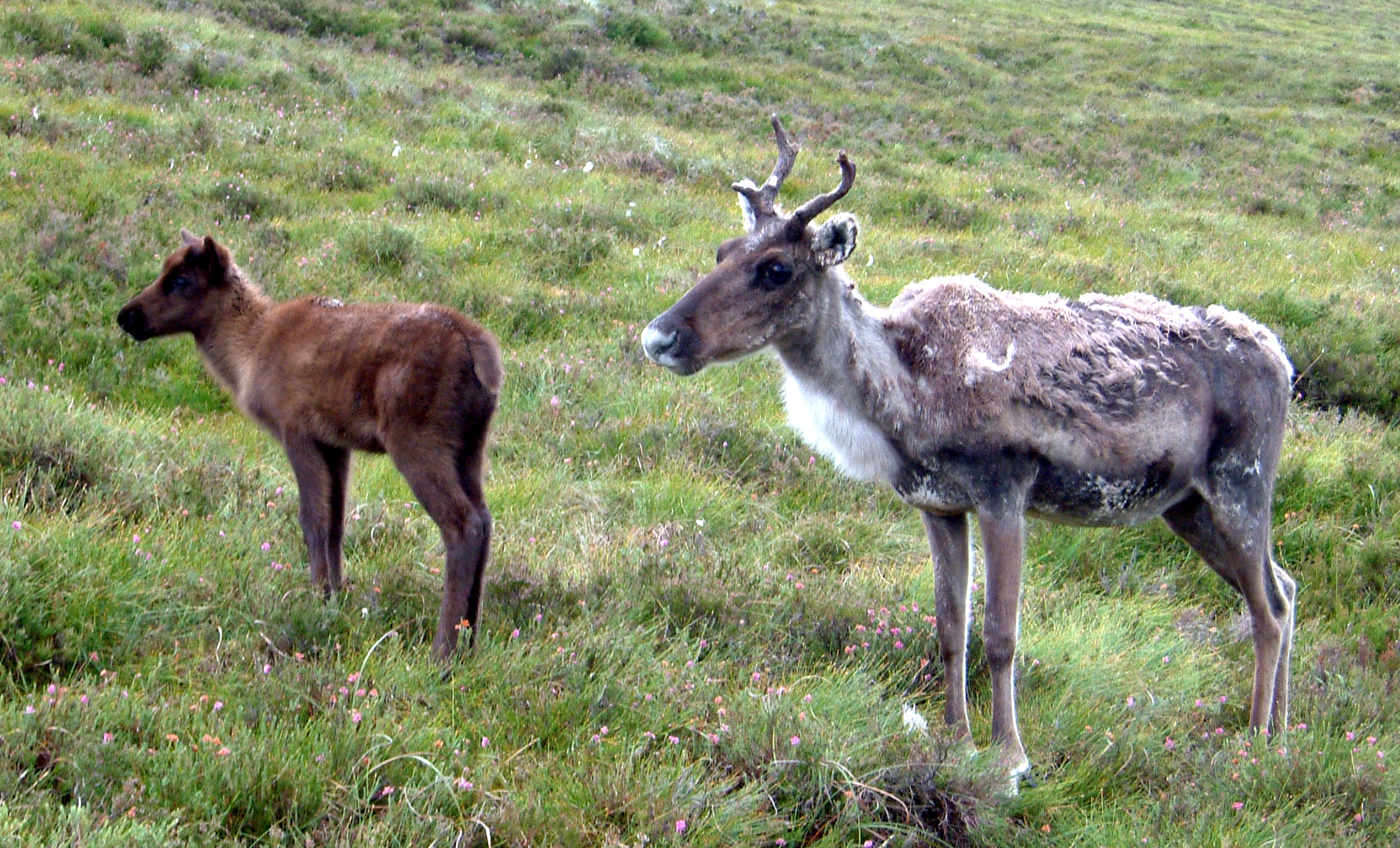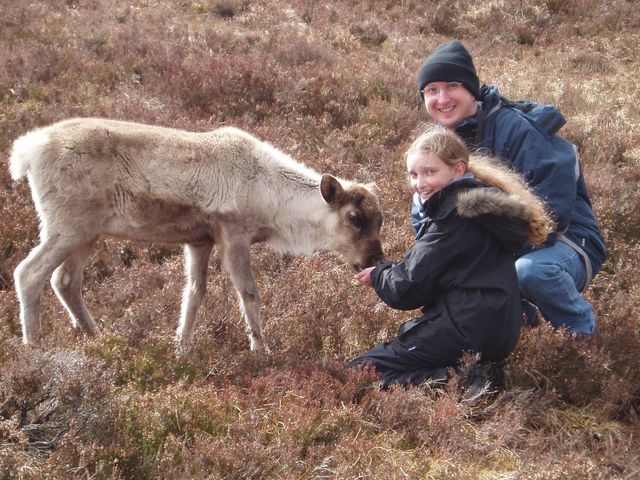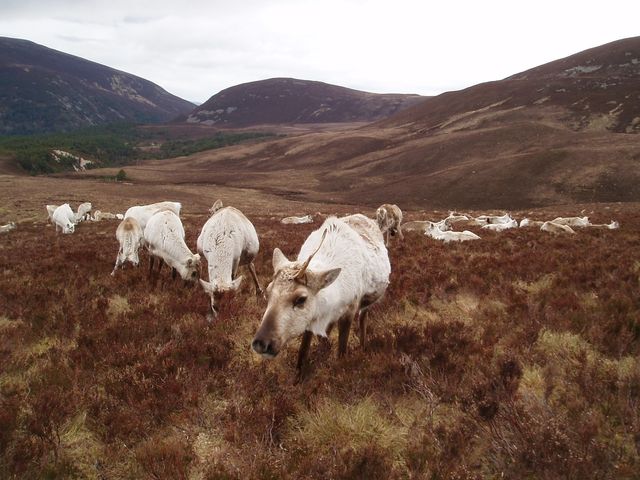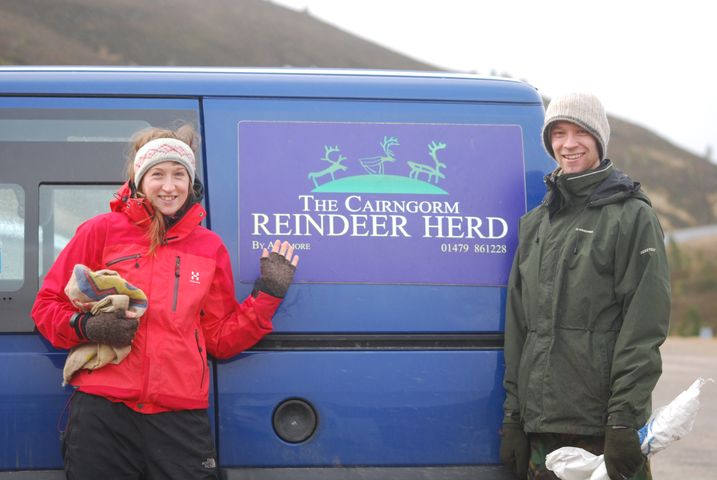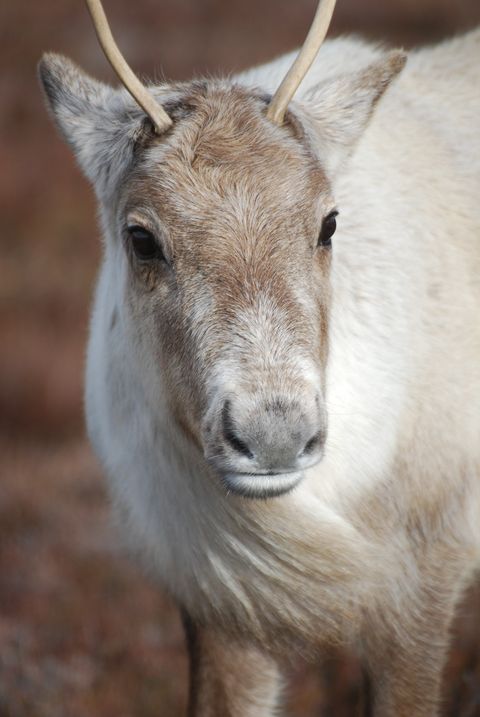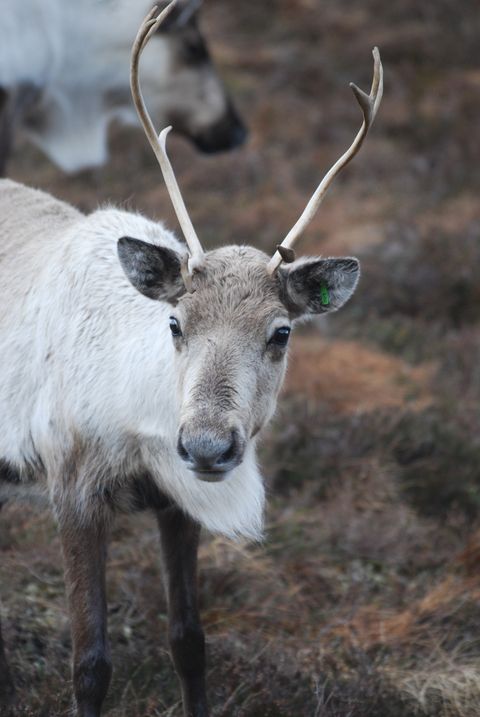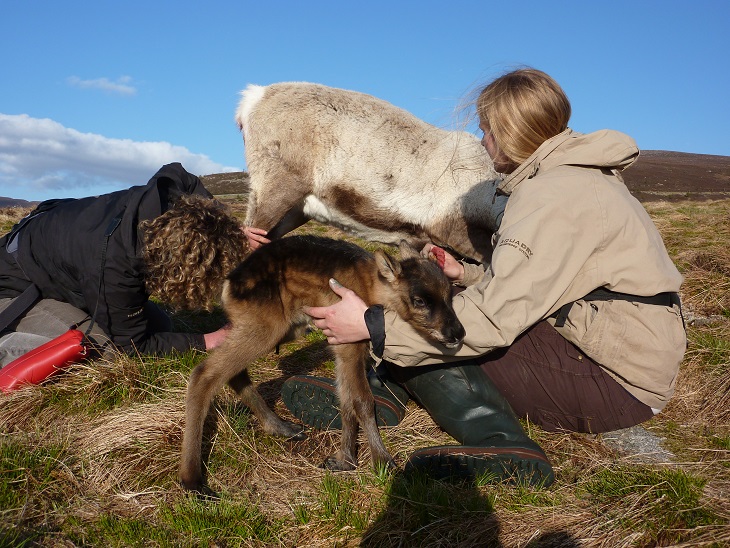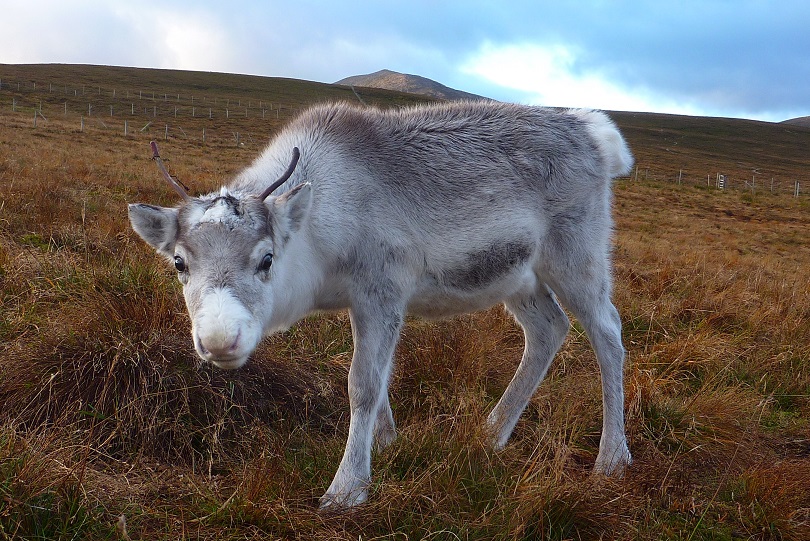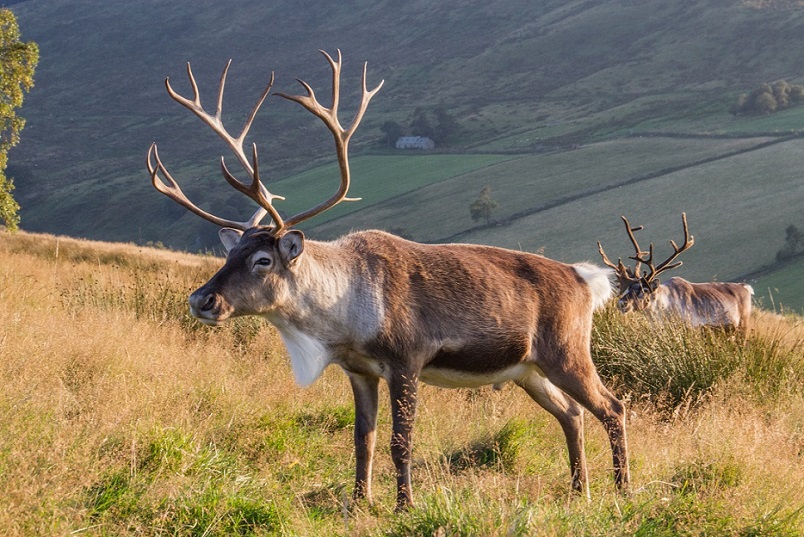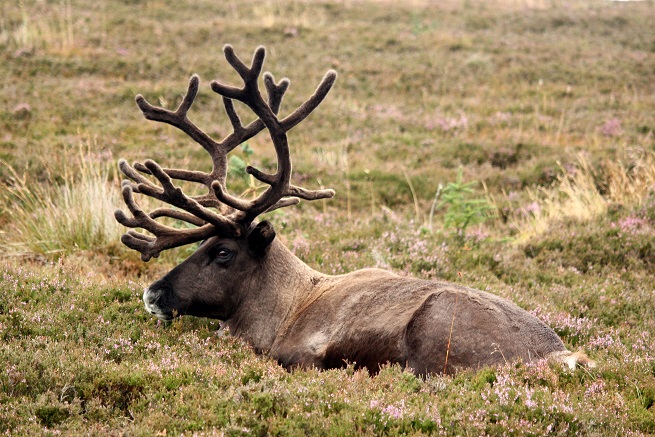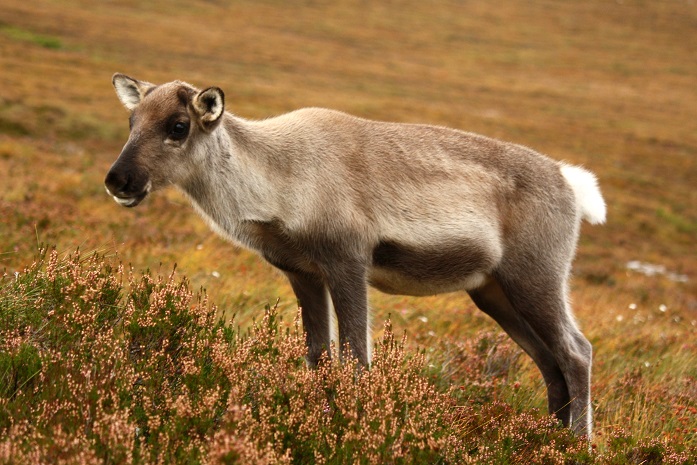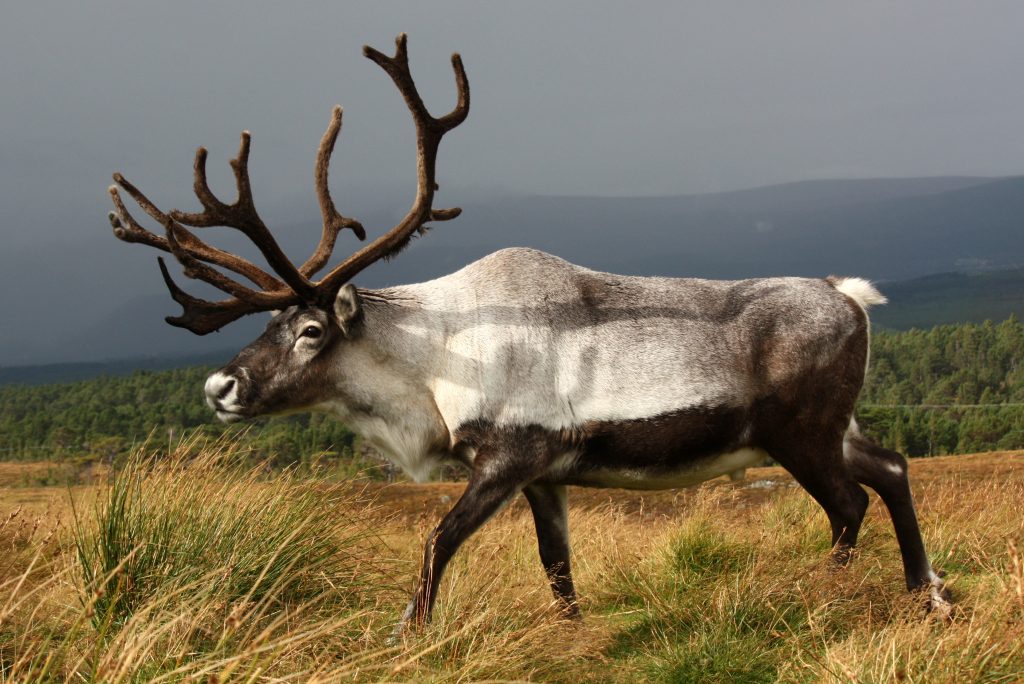
Elvis will be 16 this year, born on the 7th May 2006. His mother was Esme who was a really sweet natured female in our herd, who also lived to a grand age. Although he is a beautiful ‘Christmas reindeer’ Elvis was a real ugly duckling when he was a youngster. He’s now got old man status and is well and truly retired from any duties, but in his prime he has been out and about on our Christmas tour, greeted our many visitors on the mountain annually and won the heart of many through our adoption scheme.
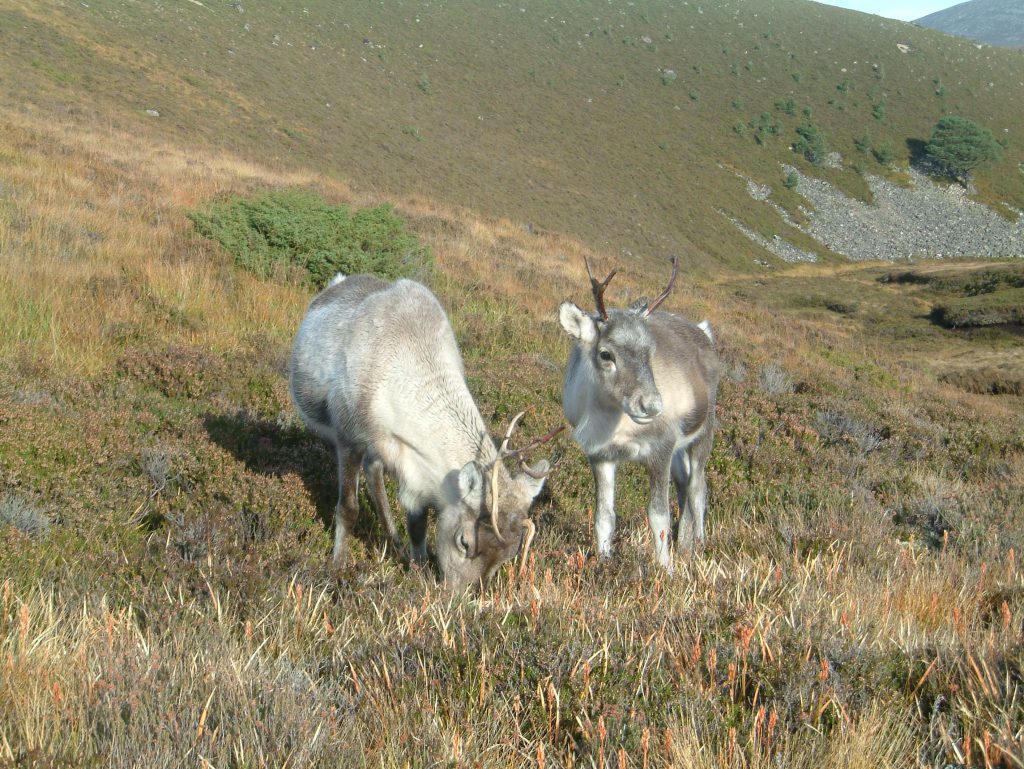
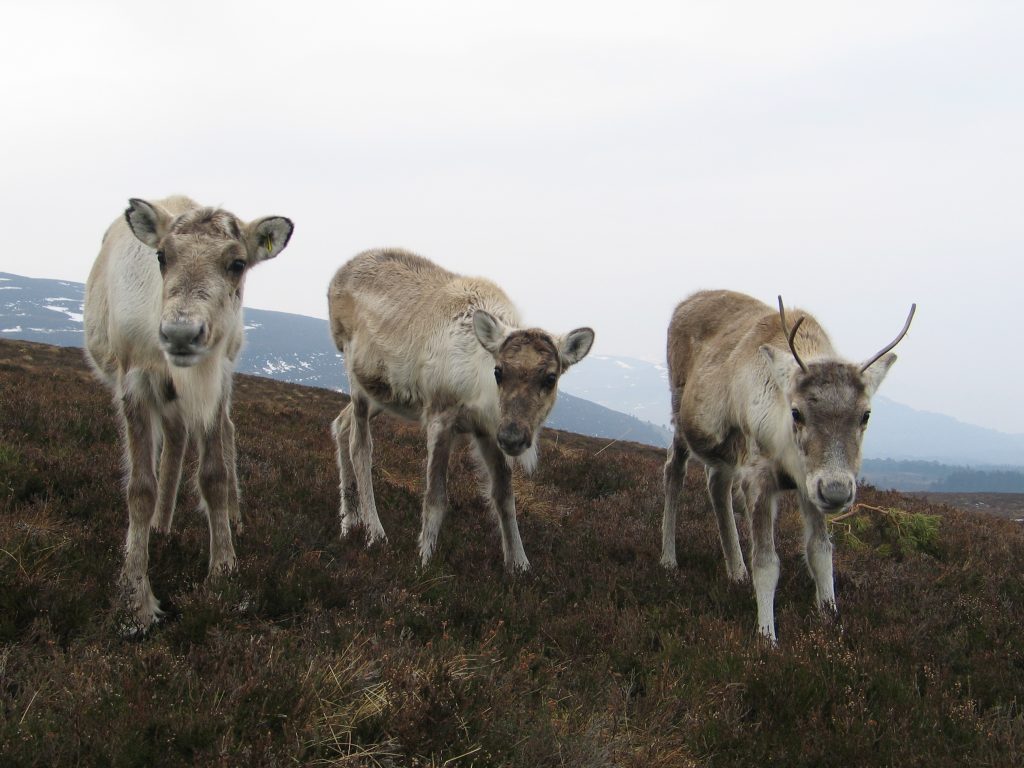
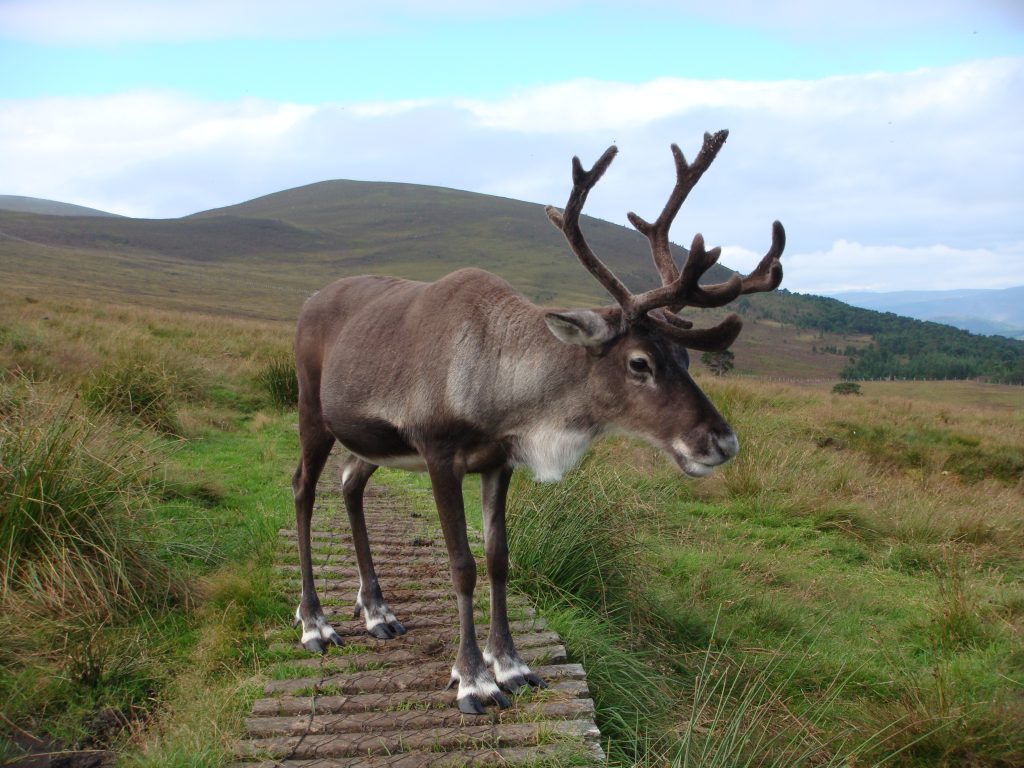
I remember taking Elvis out on tour over a number of years and he was always a great role model to the younger, less experienced reindeer. He has visited Harrods in London, towns as far south as Cornwall and of course done many other events in Scotland, England and Wales. He grew a lovely set of antlers every year and still to this day amazes us with a great set of antler annually, even at his age!
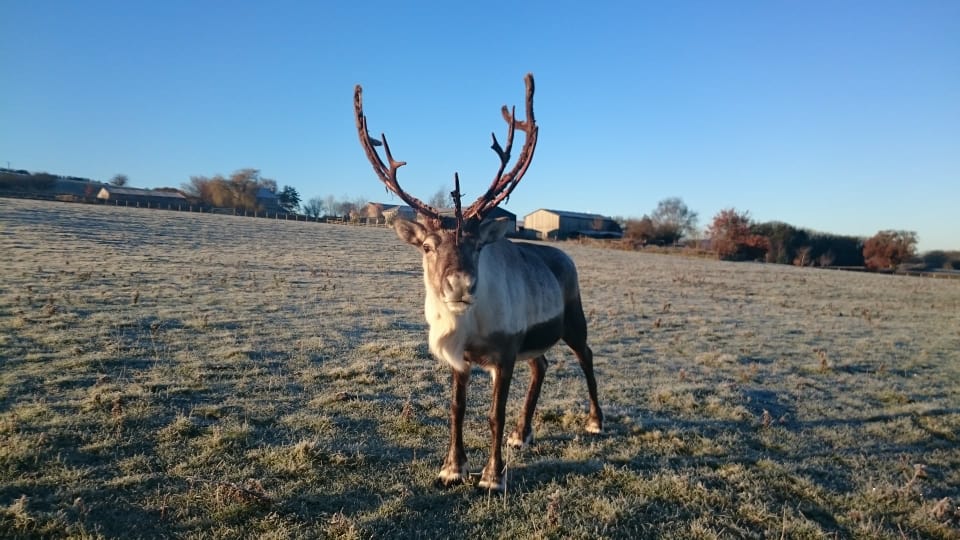
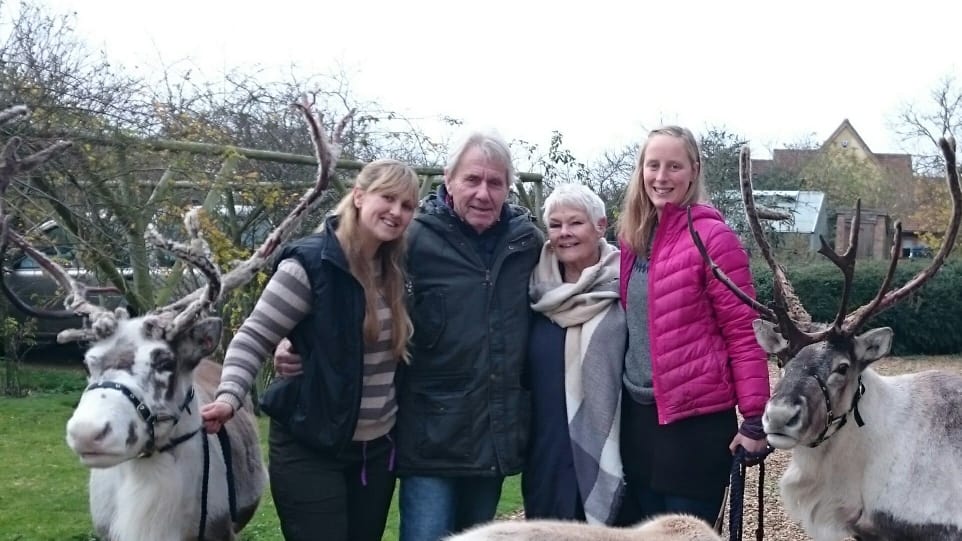
He comes from quite a small family and there are no longer any breeding females left in his immediate family line. Okapi, his sister is just like her mum and brother by having a sweet nature and of course like most reindeer is very greedy. She spends all her time on Cairngorm, unlike Elvis who spends all of his time at our Glenlivet site either free range on the Cromdale hills over winter or down at our hill farm during the summer months. Okapi has to remain here as quite a few years ago she had an injury which meant she was unable to breed ever again, however, being so tame and friendly she is a great leader of the herd and often when we bring them in from free ranging in the mountains she helps us herders to do this by following very willingly!
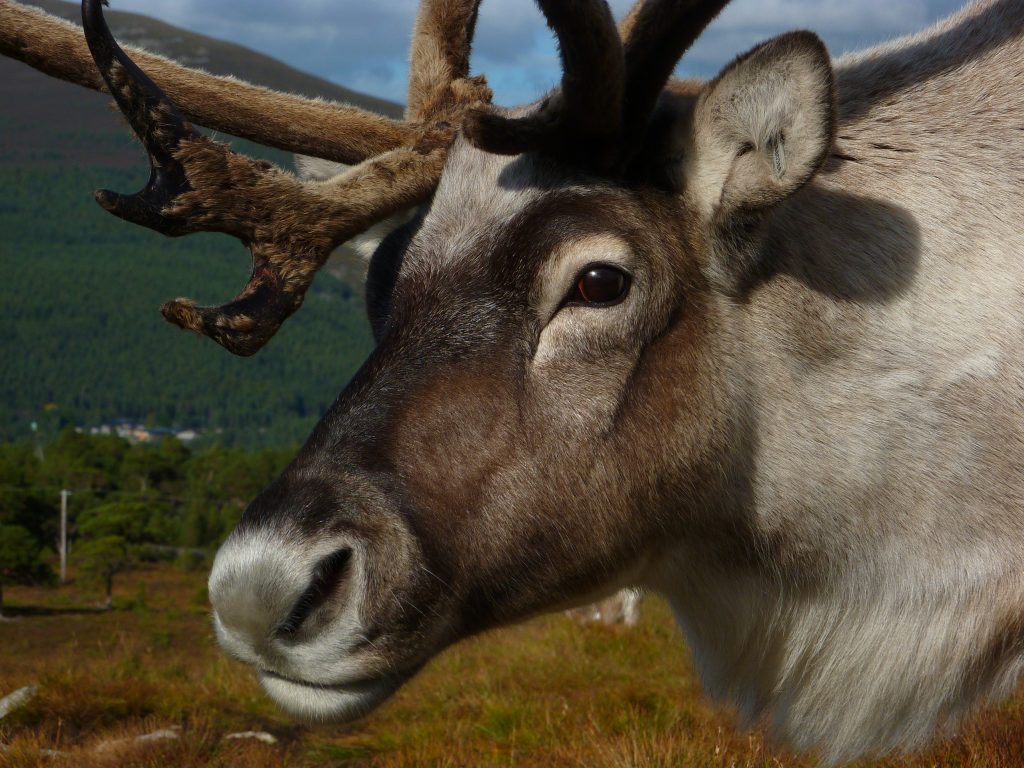
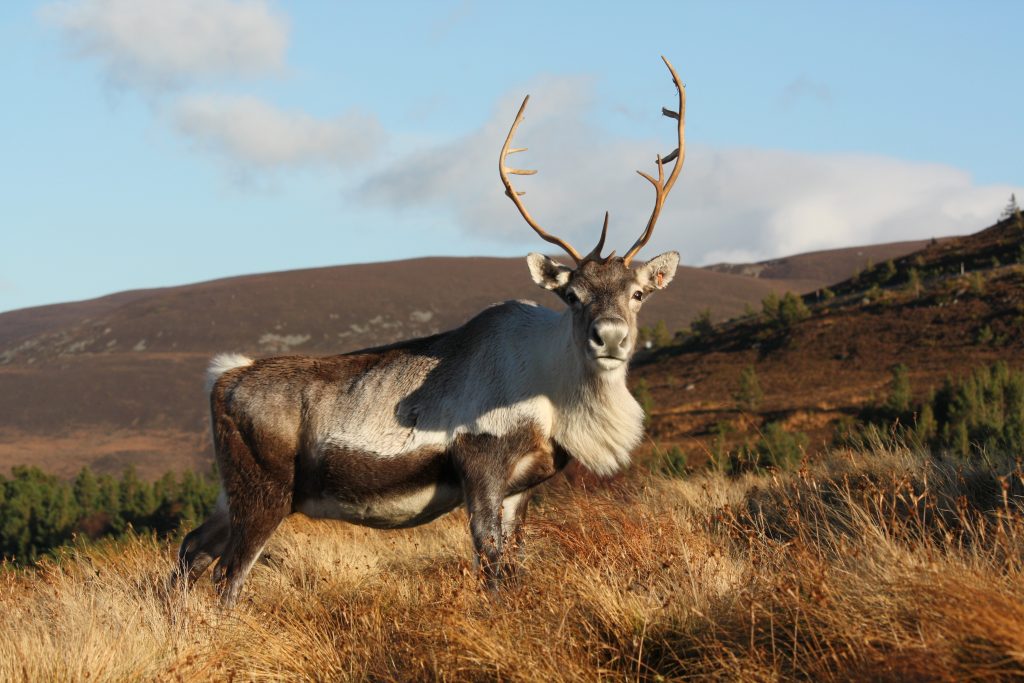
Over the past year Elvis has started to look his age… and fairly so! When getting up from lying down he is that little bit stiffer than he would have been a couple of year ago. The stiffness doesn’t last for too long but I’m sure many of you can relate to this when getting out of bed in the morning. We have put him up onto the Cromdale Hills again for the winter season with the rest of the herd and will catch up with them a few times throughout the week for a feed and check over. Elvis, a few times now, hasn’t shown up immediately when the herd call down off the top ridge, however, him and Bovril (another old boy in the herd) eventually come wandering down at their own pace so we’ve learnt to save a bit back now so the other greedy reindeer don’t eat it all!
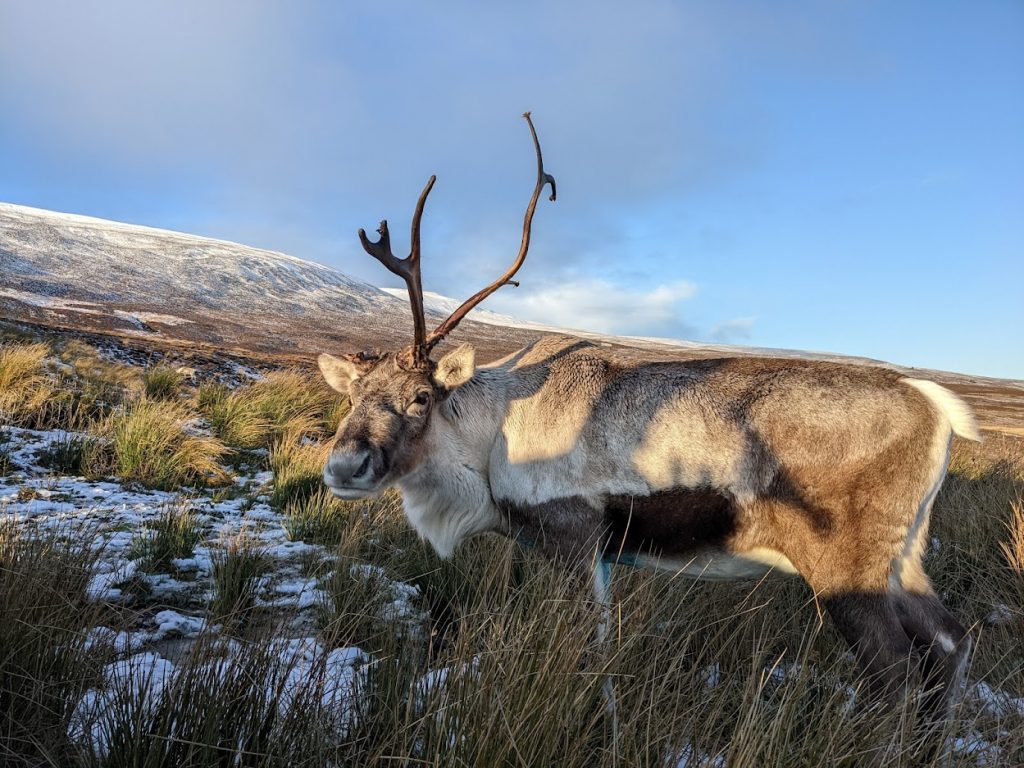
It will be a sad day when we don’t have Elvis around anymore but he has been a great ambassador to the Cairngorm Reindeer Herd and I’ve known him from my late teens and right through my 20’s and 30’s so he will be a reindeer that I will chat about in years to come so his spirit will definitely live on!
Fiona

